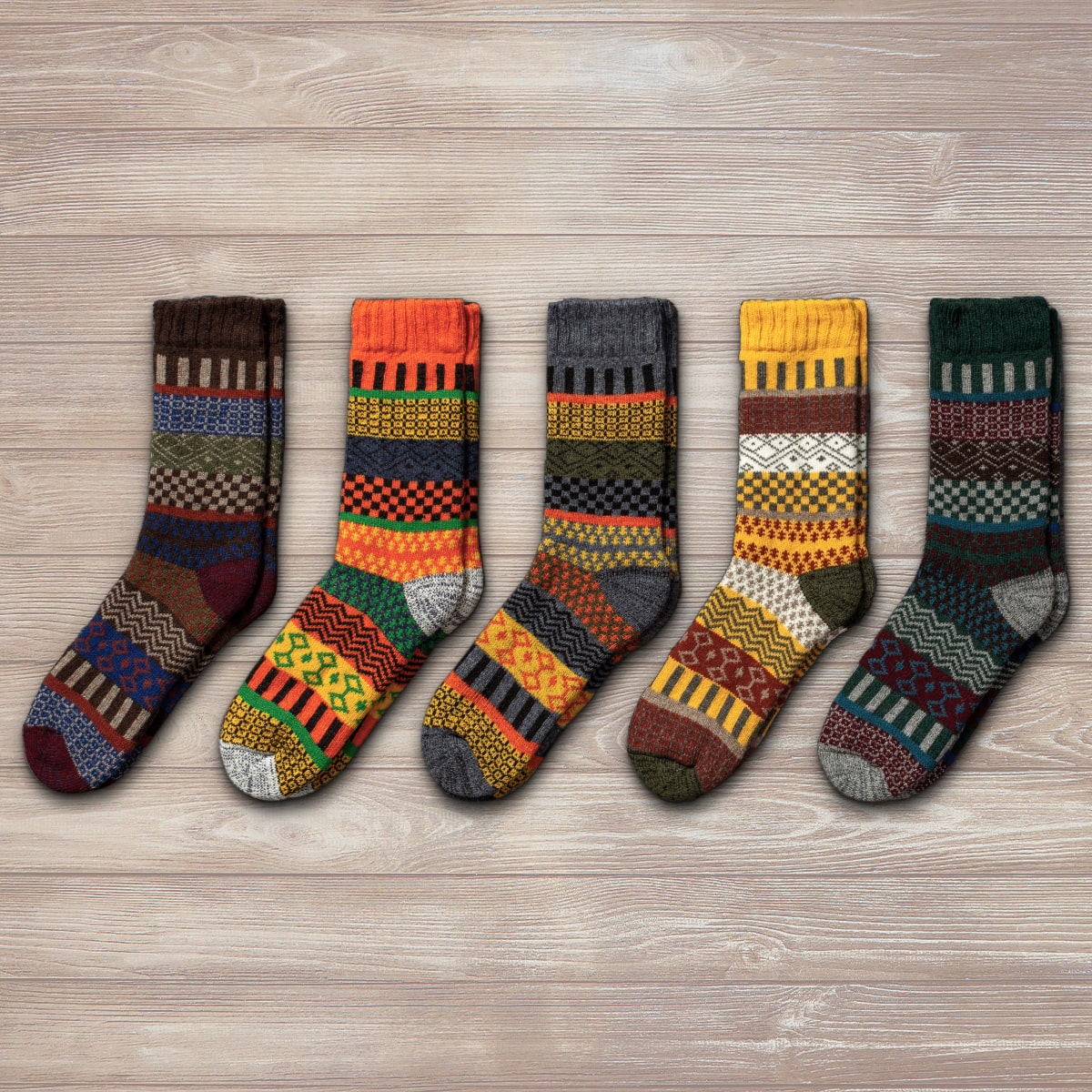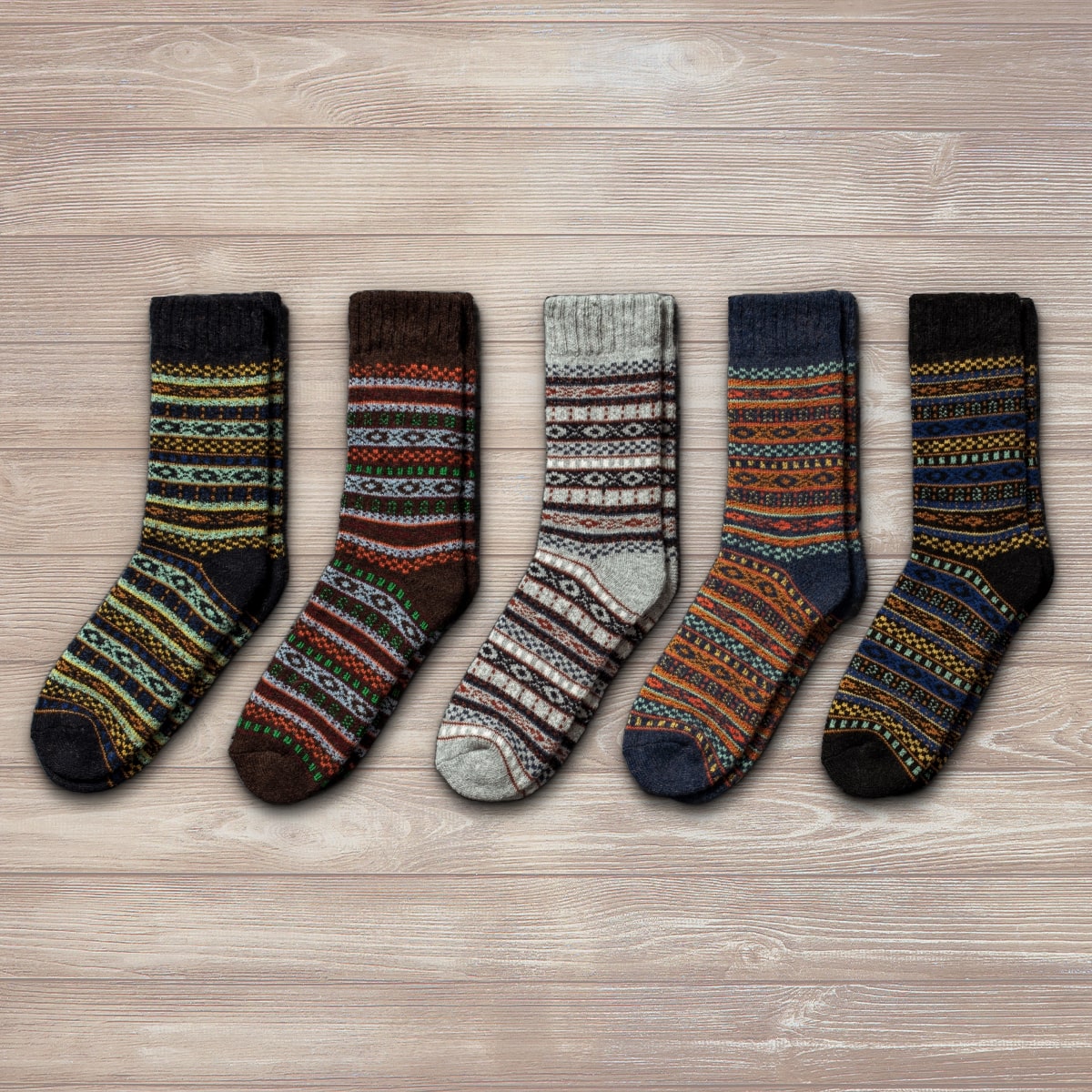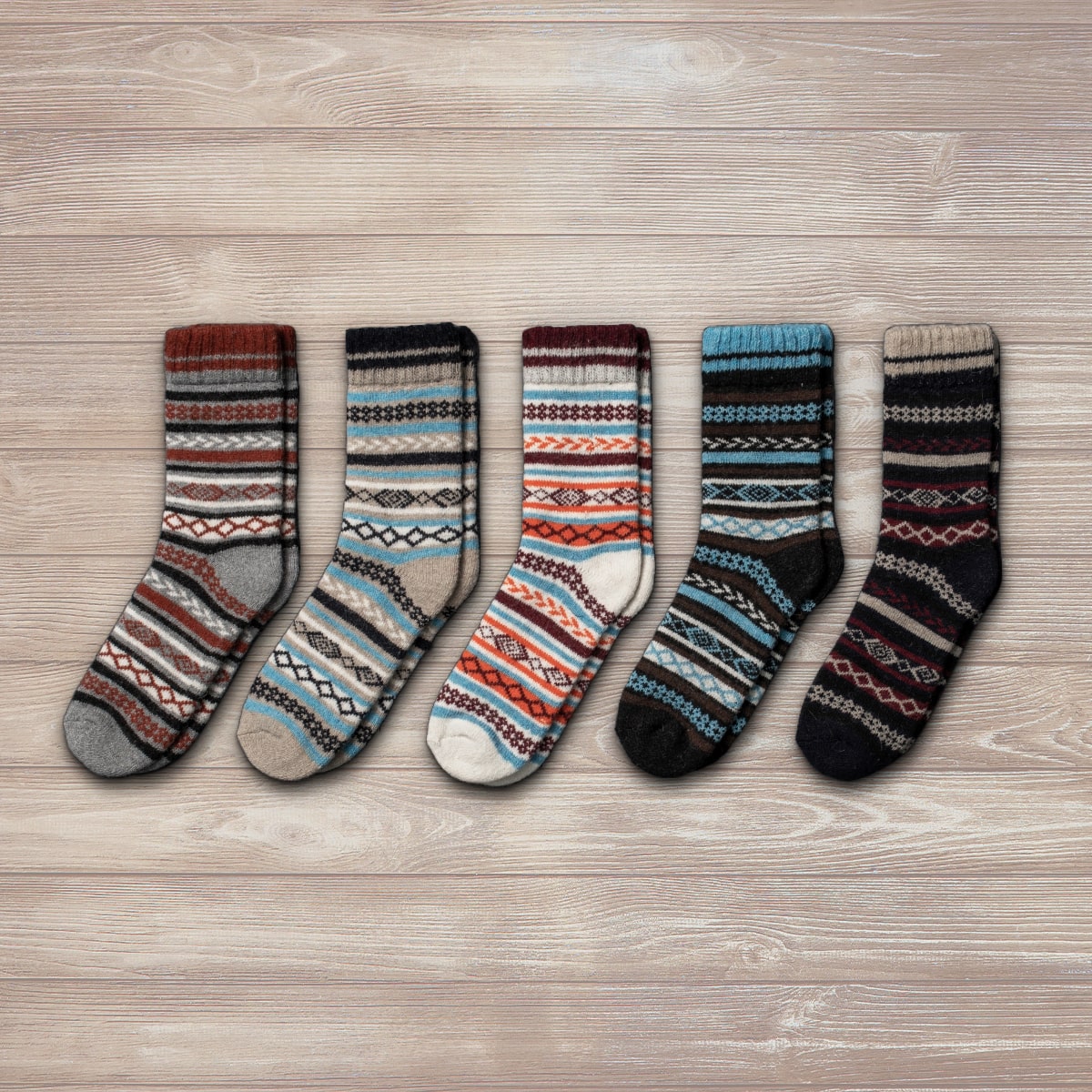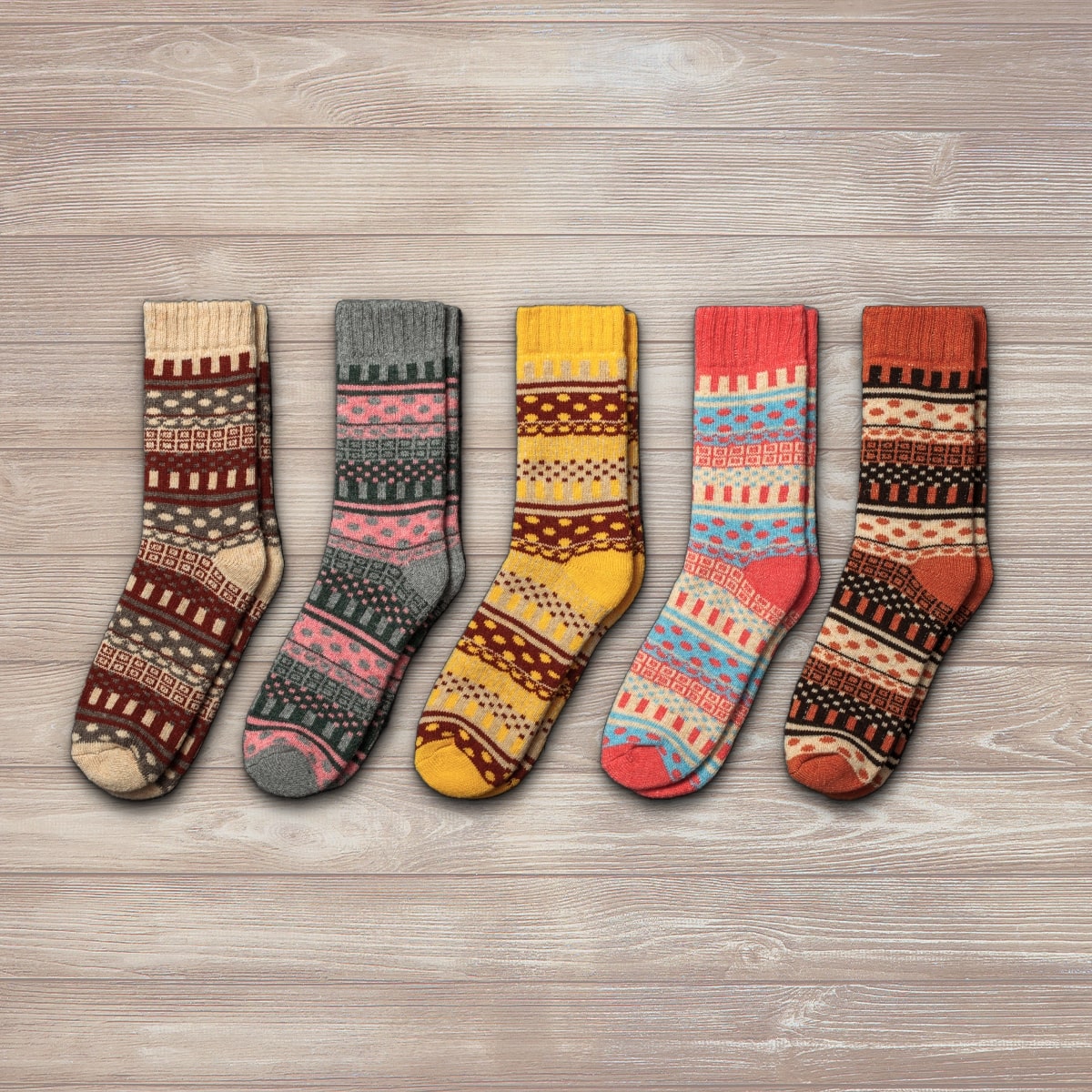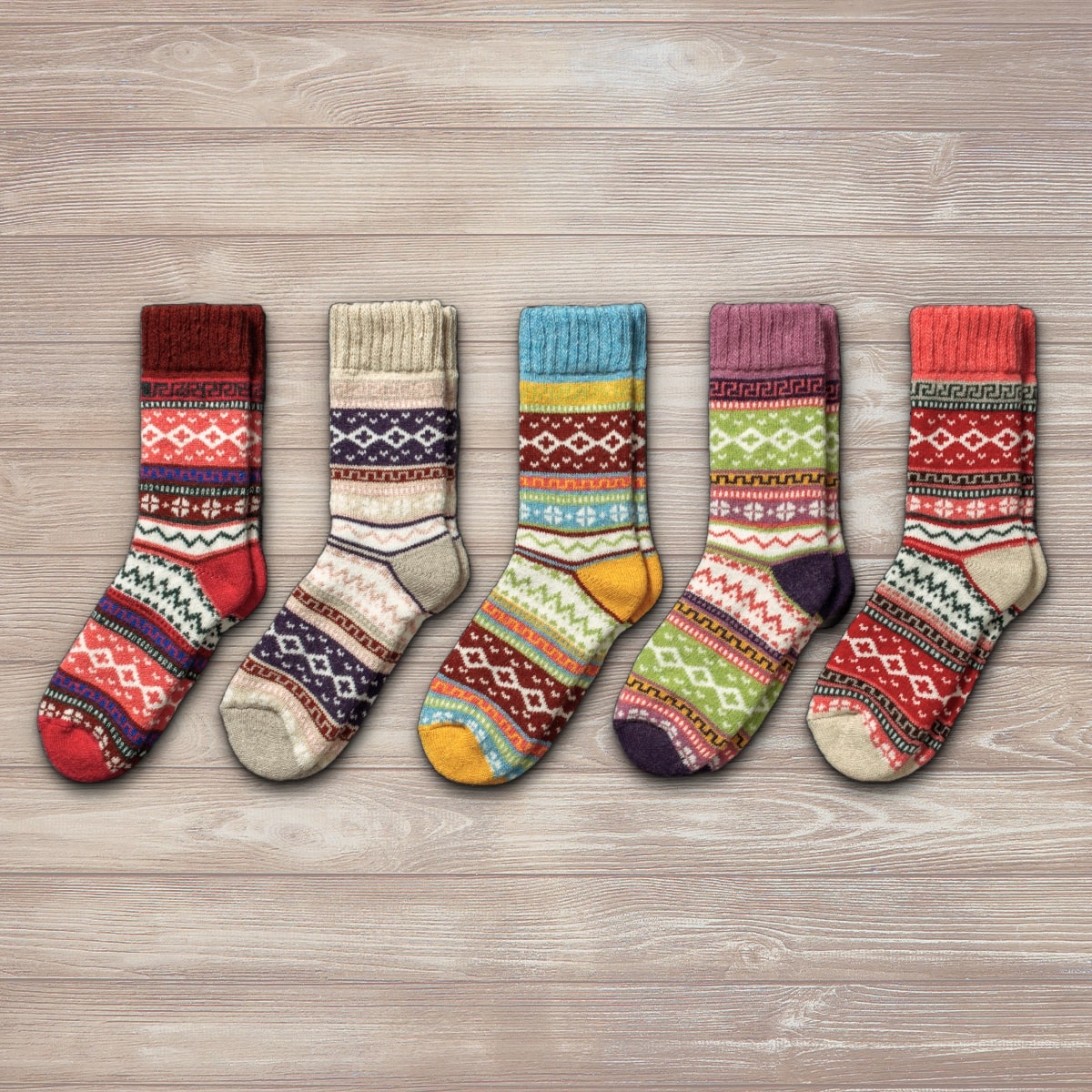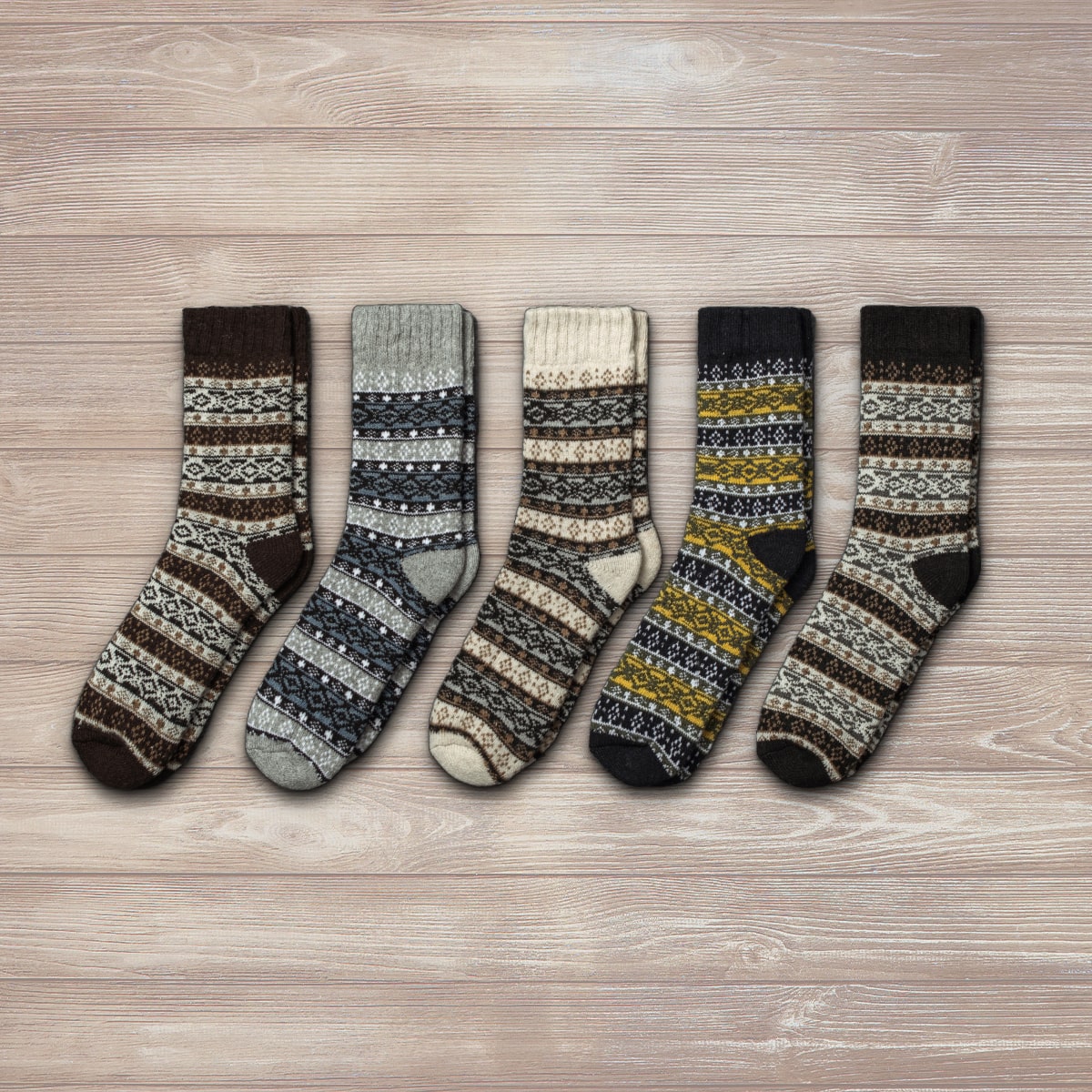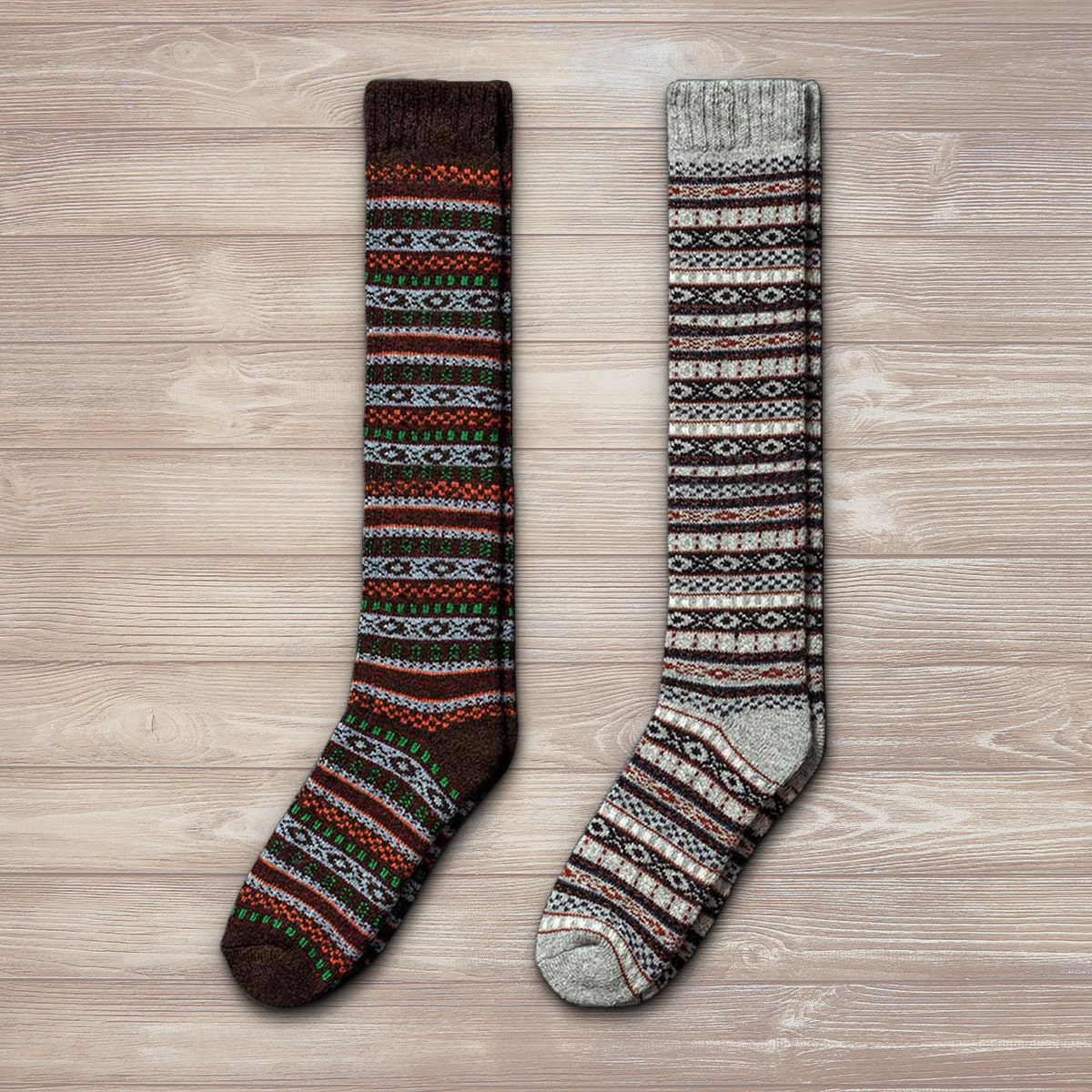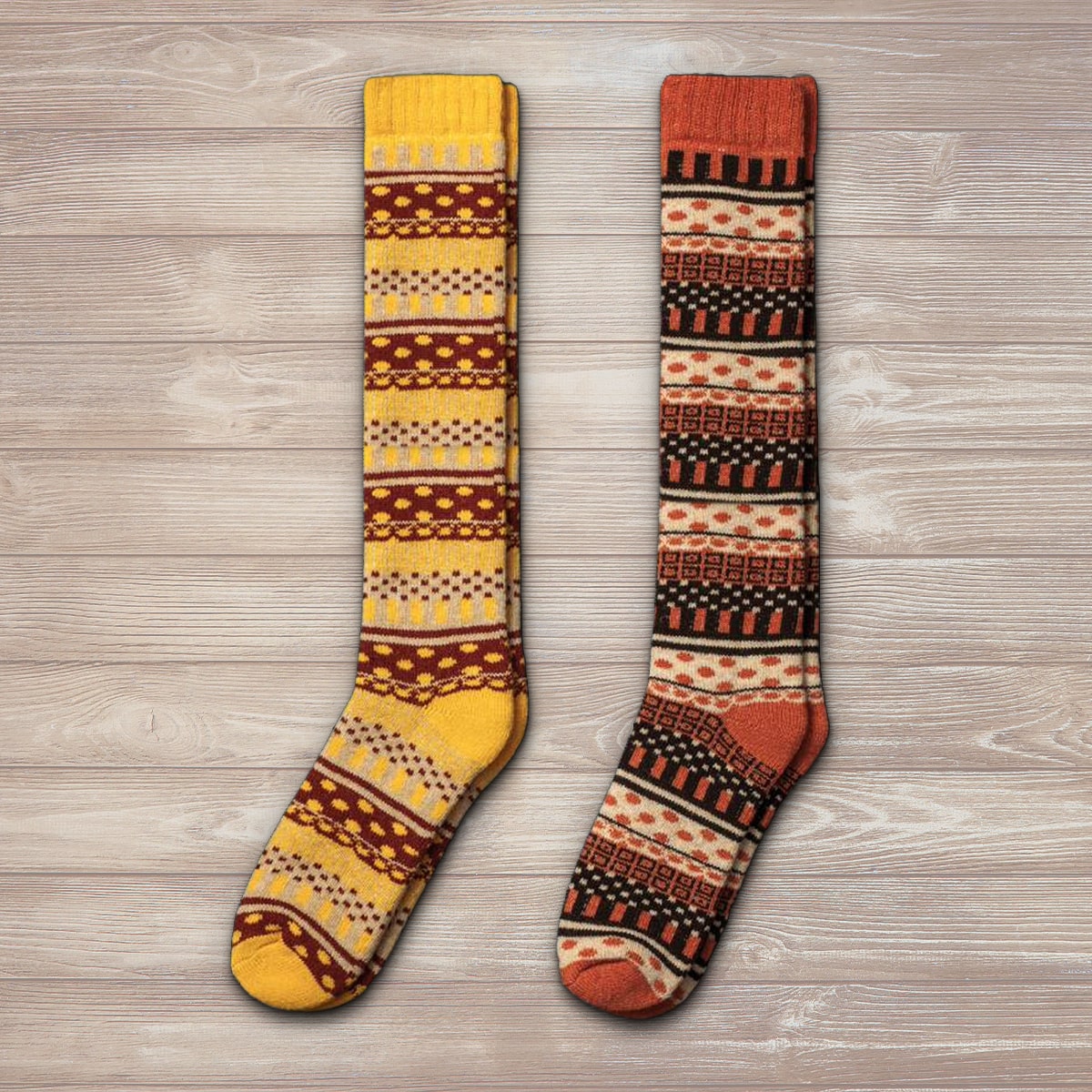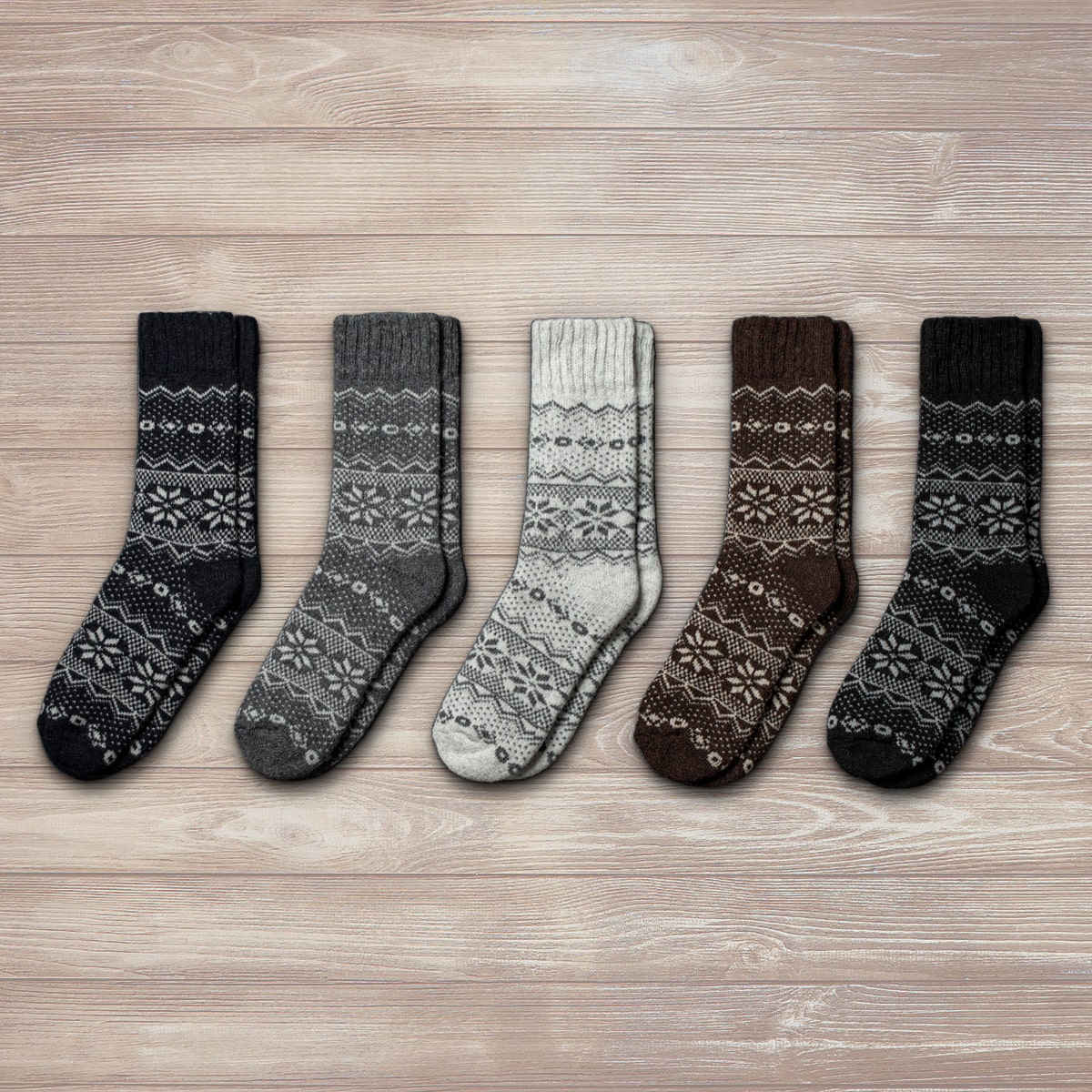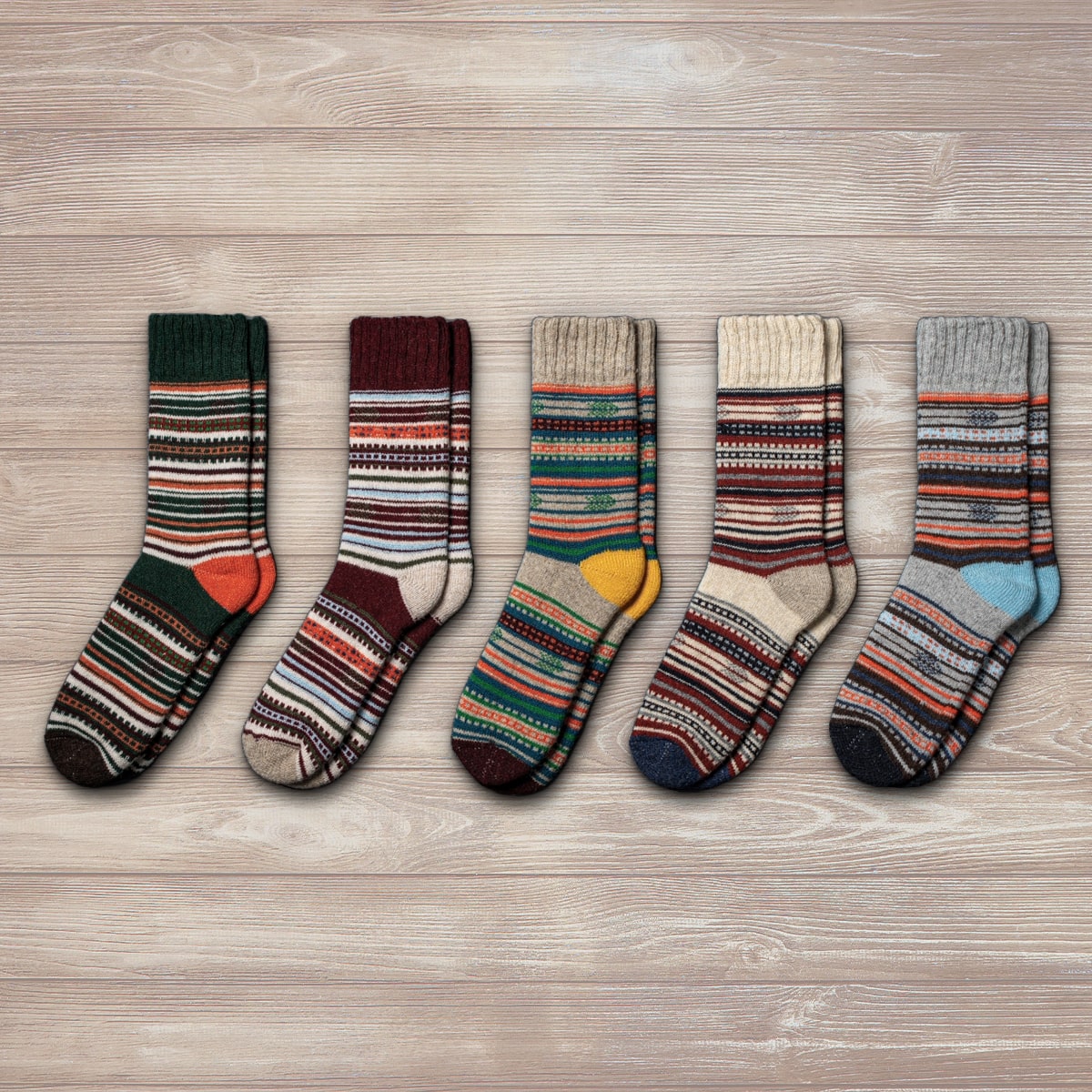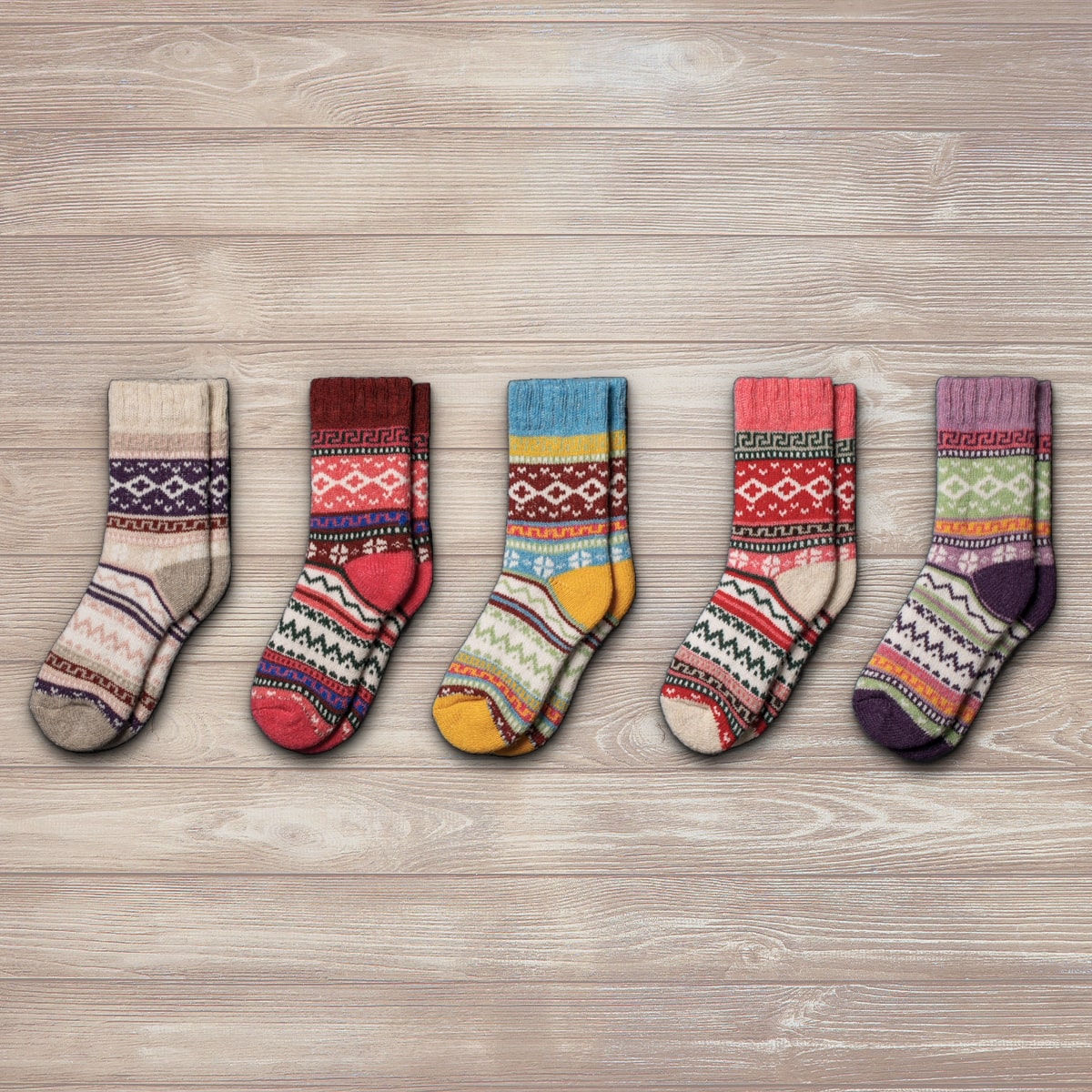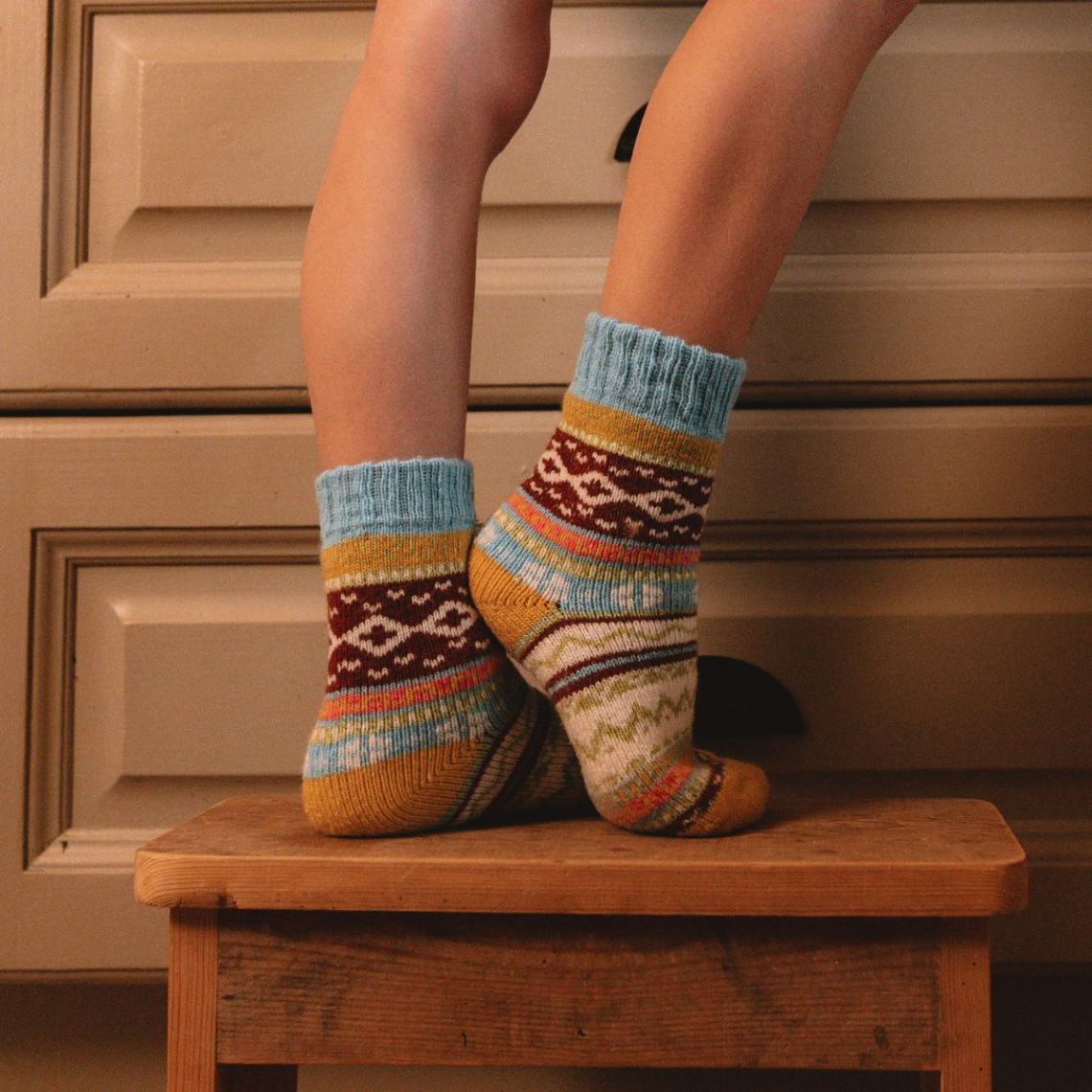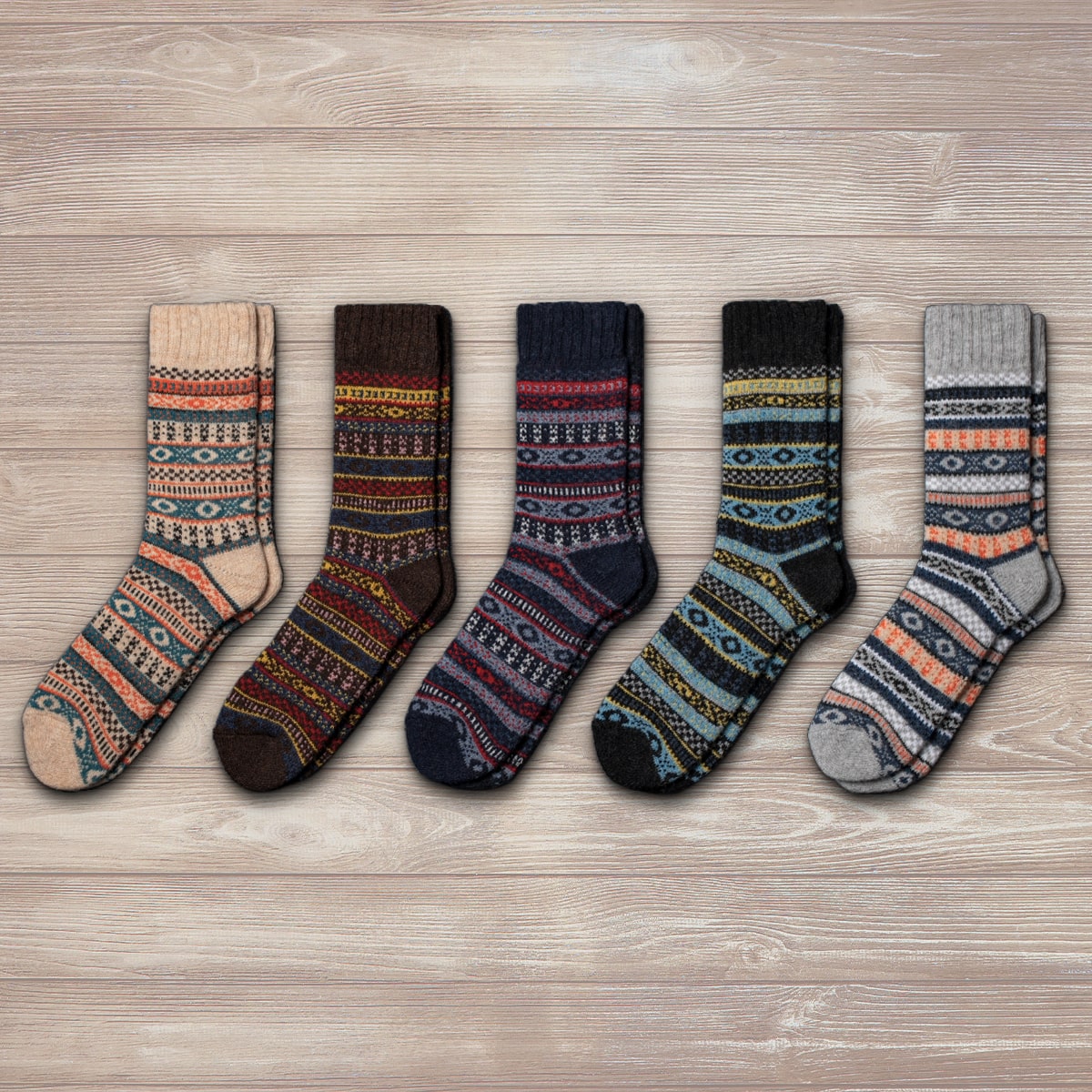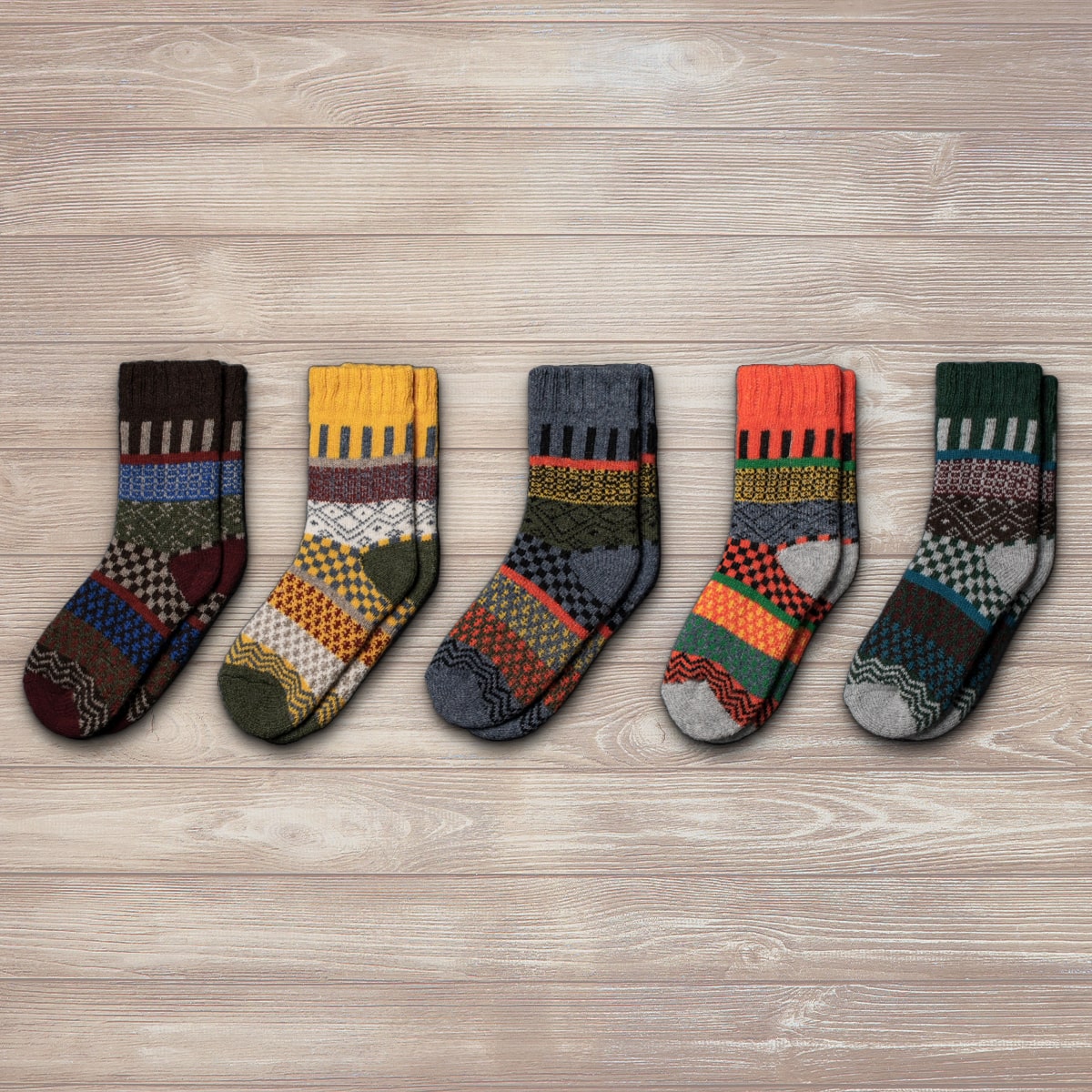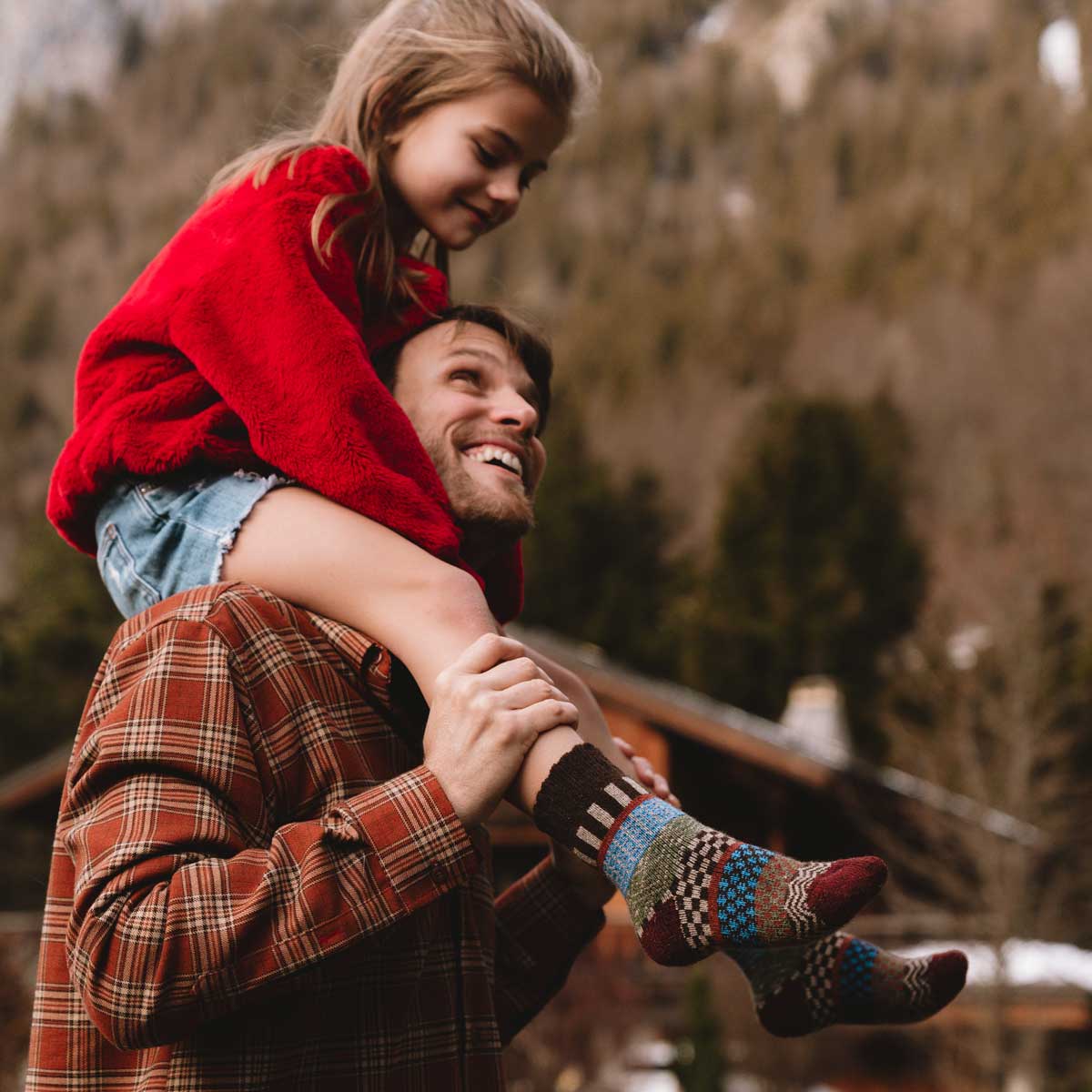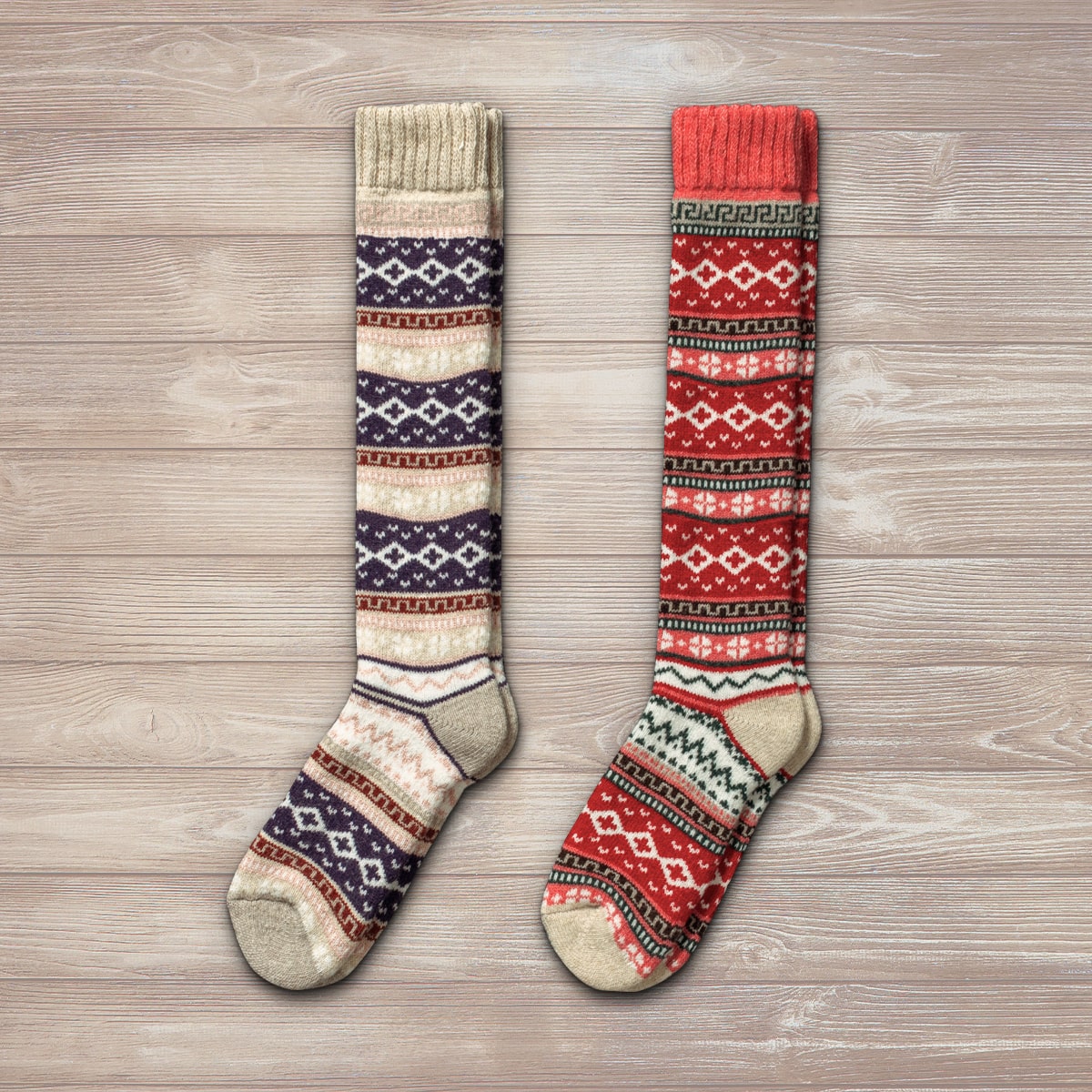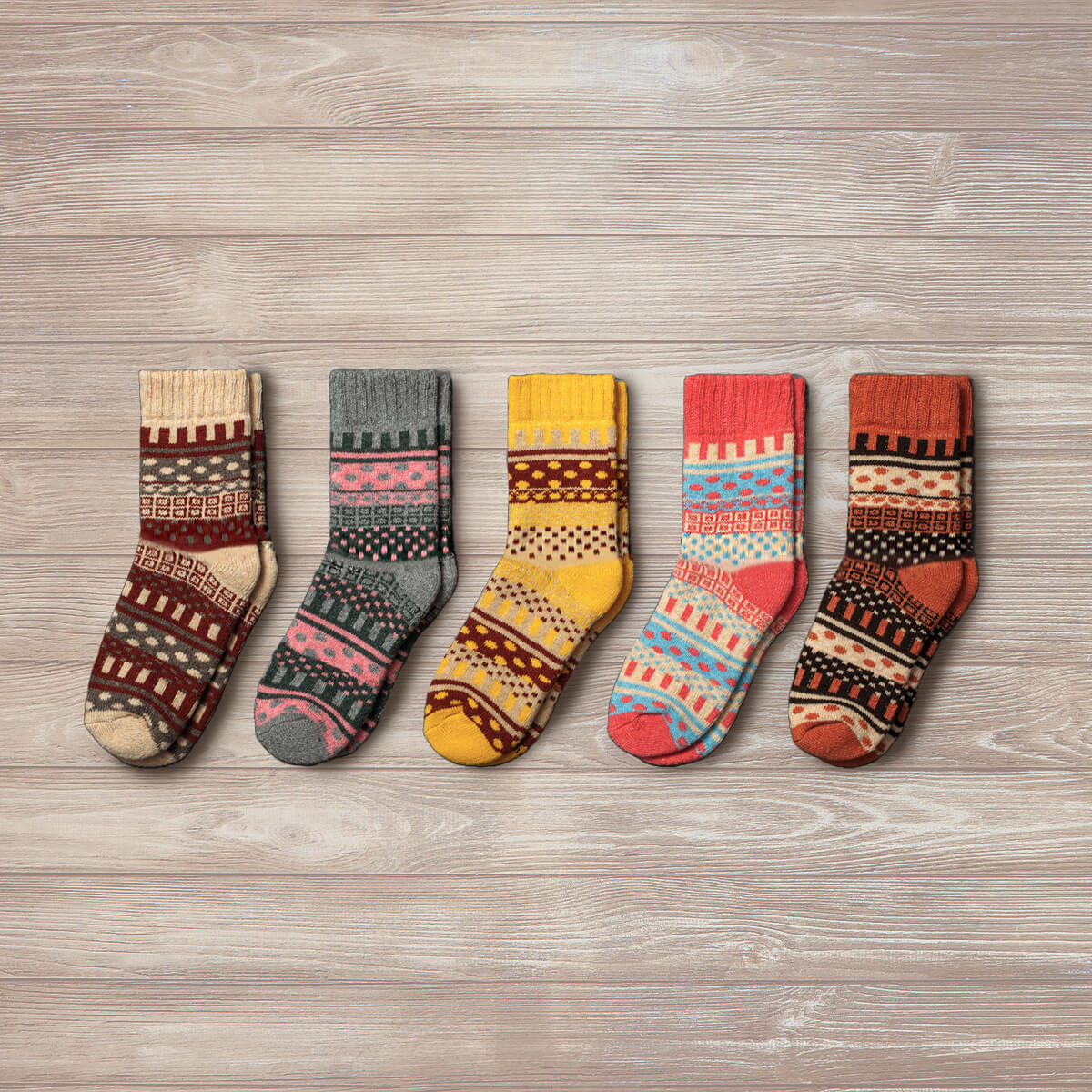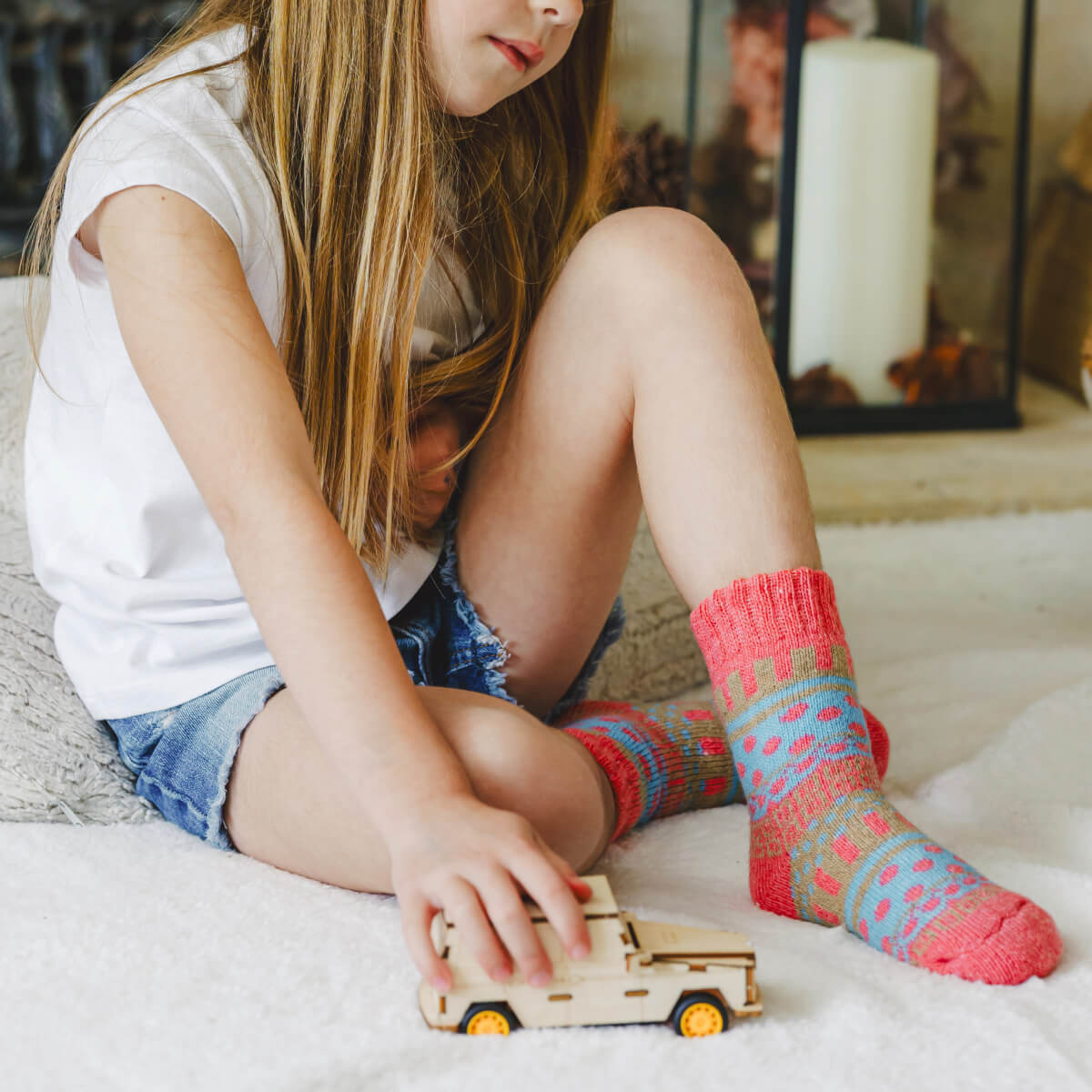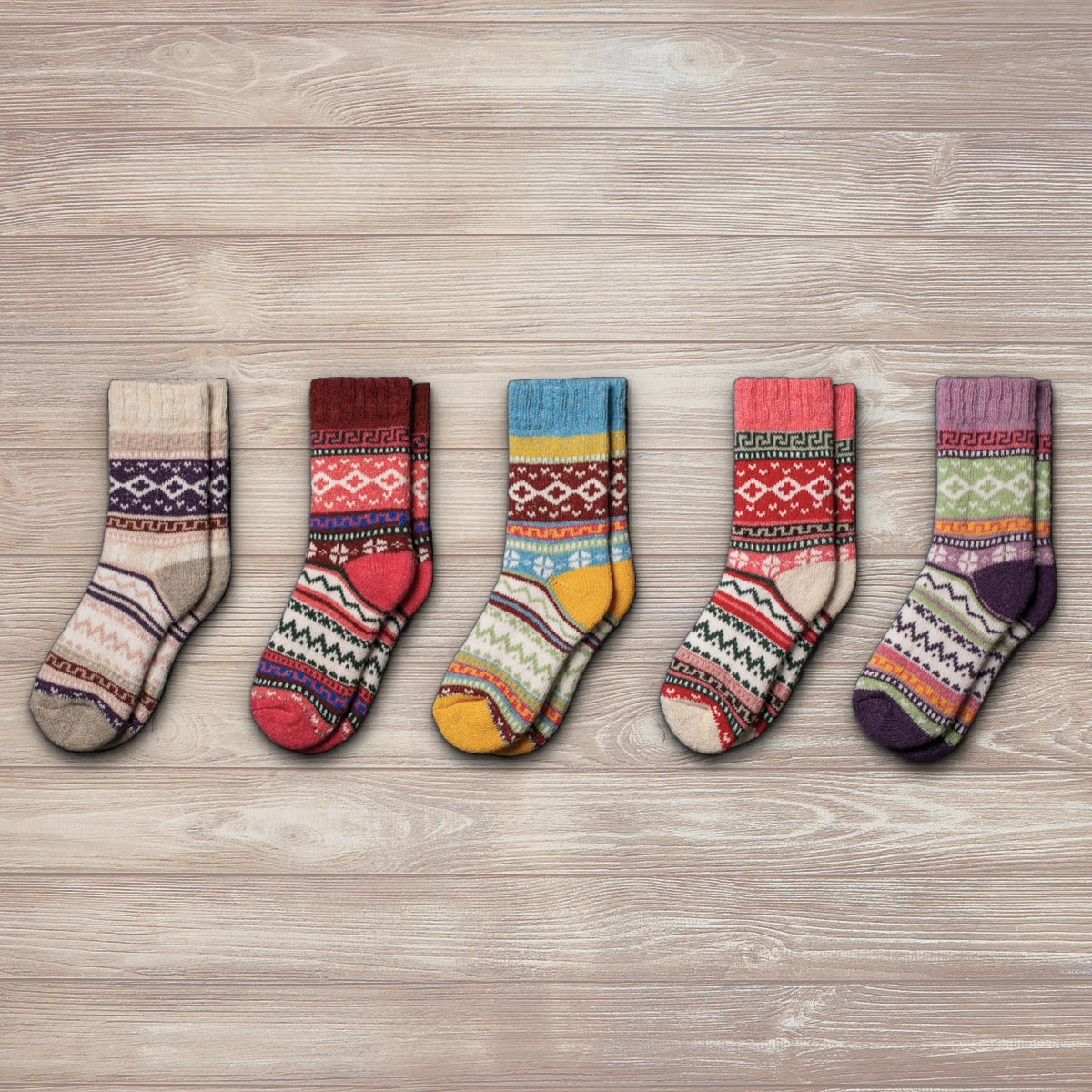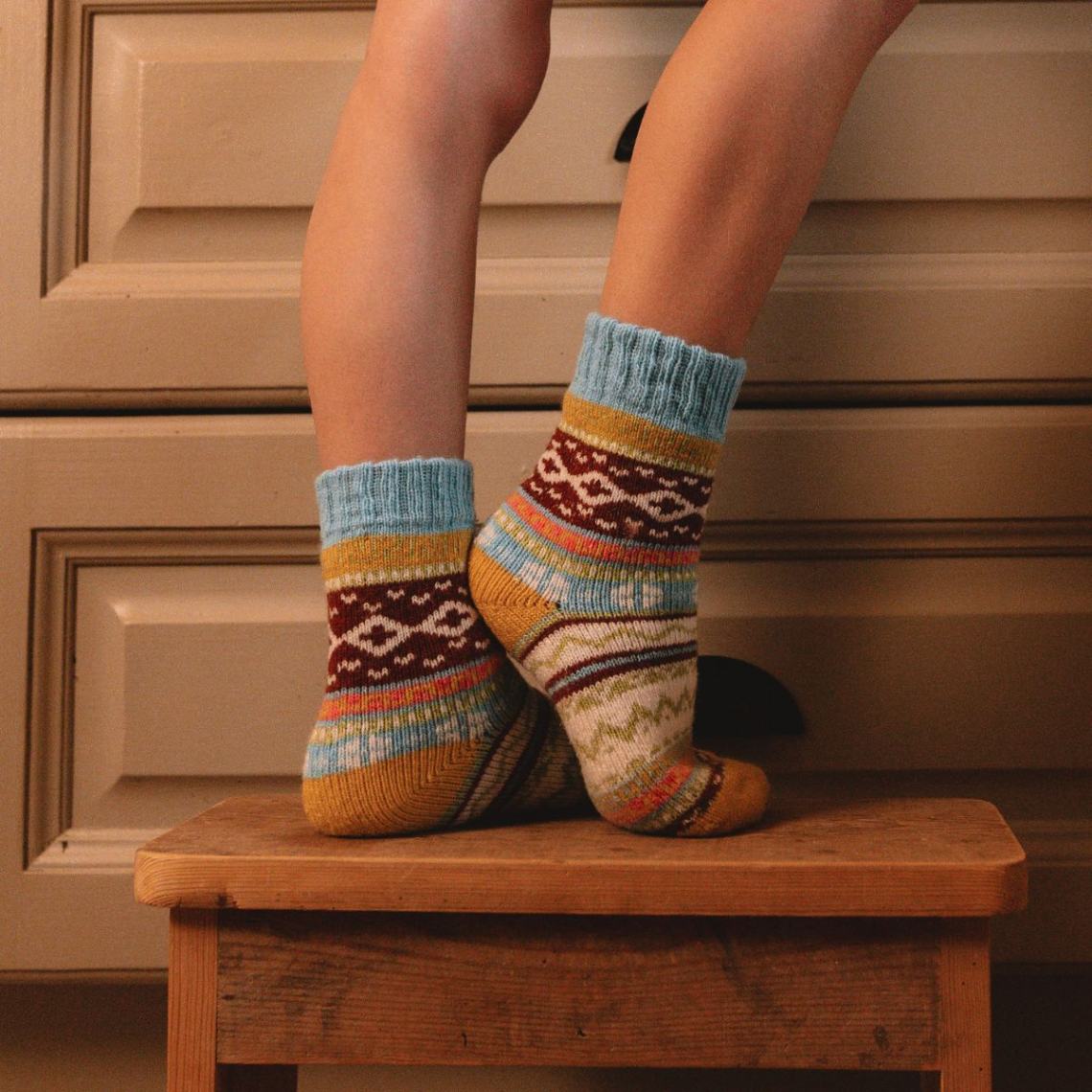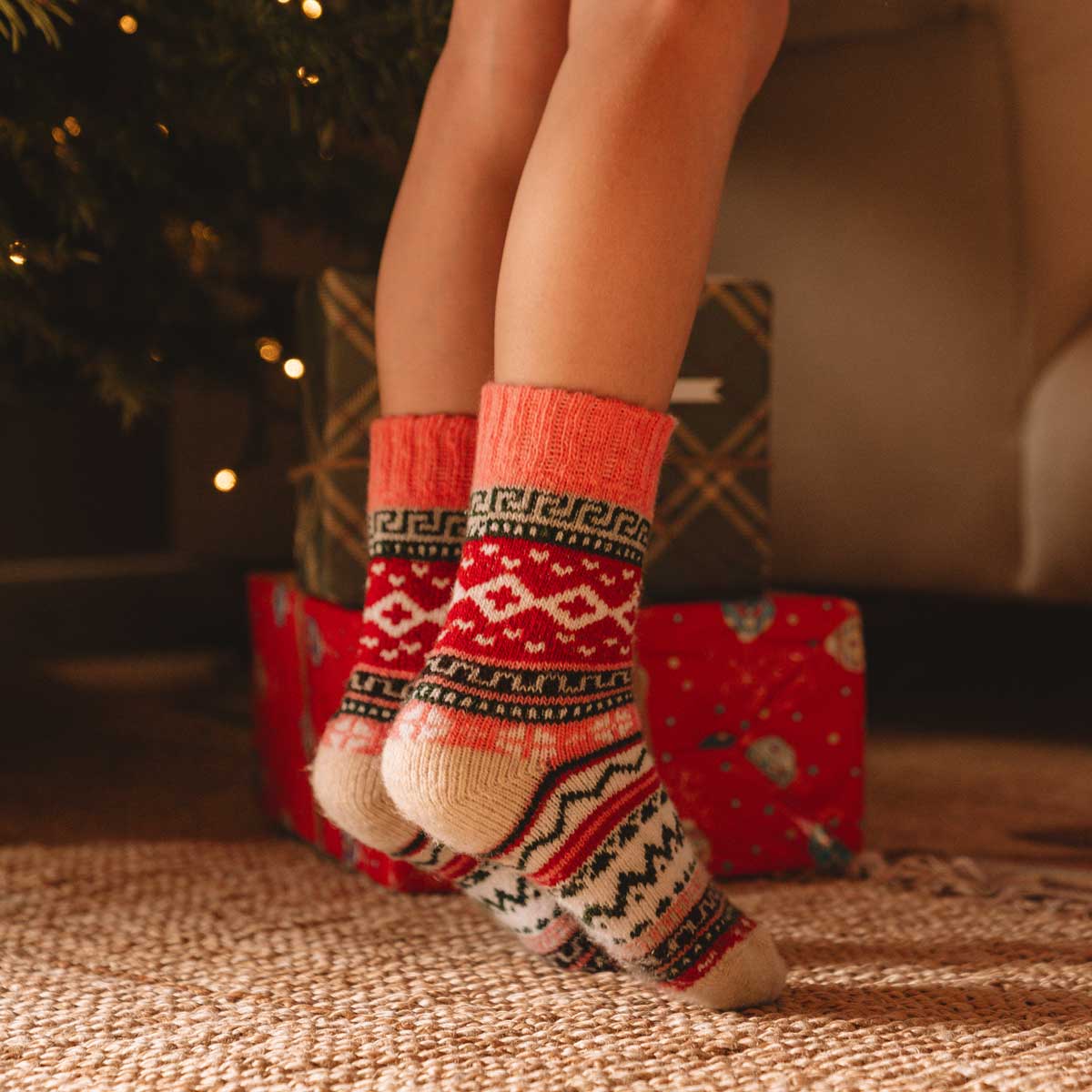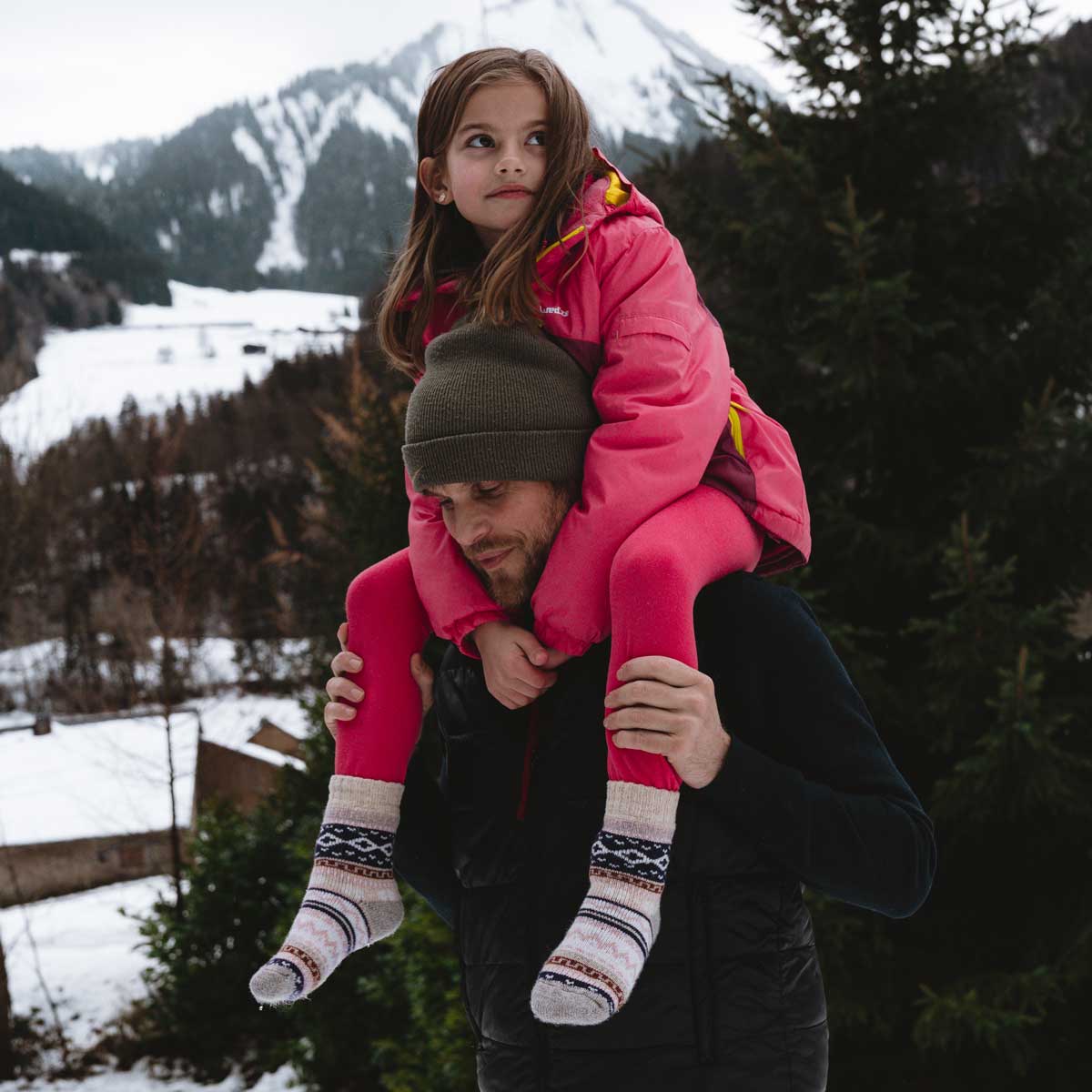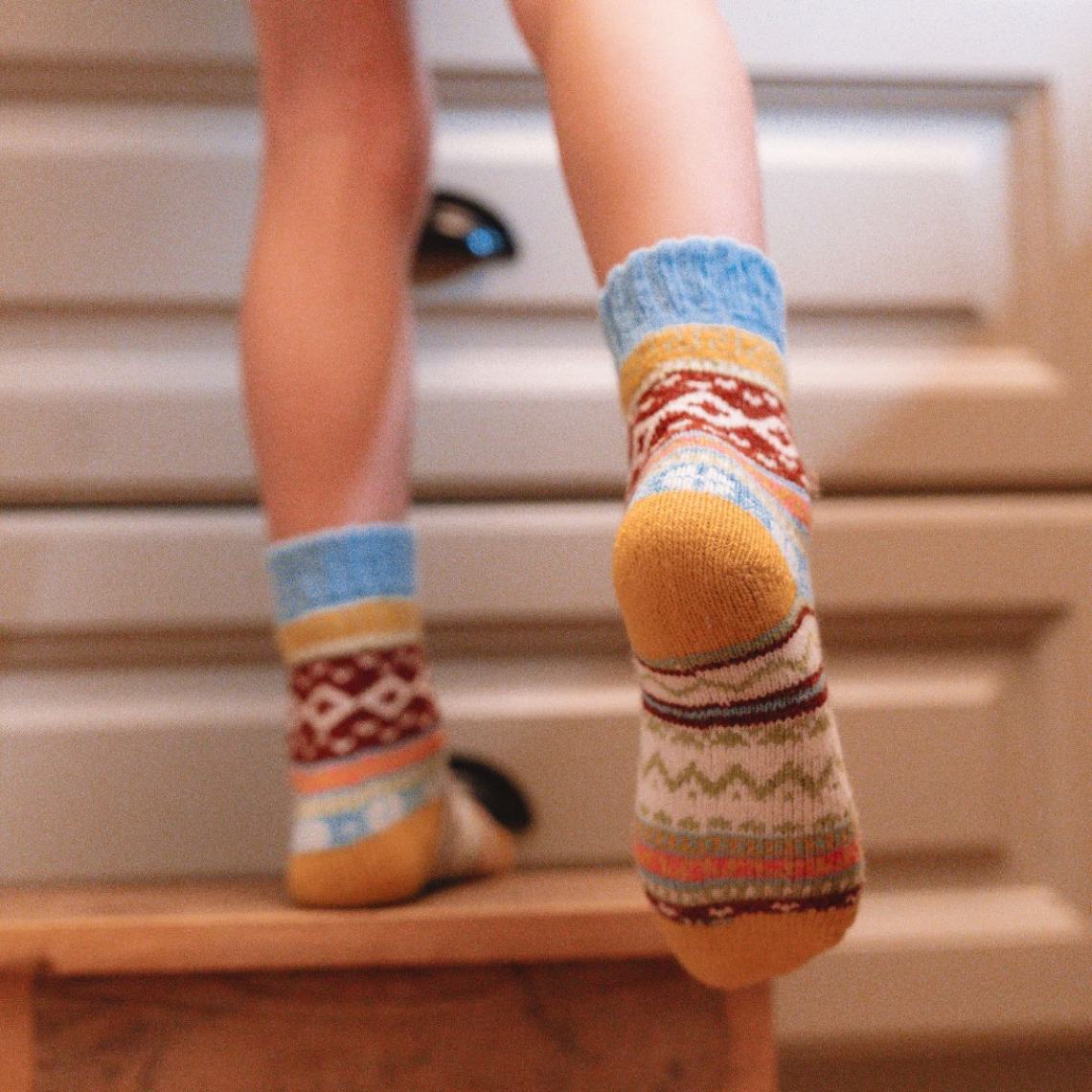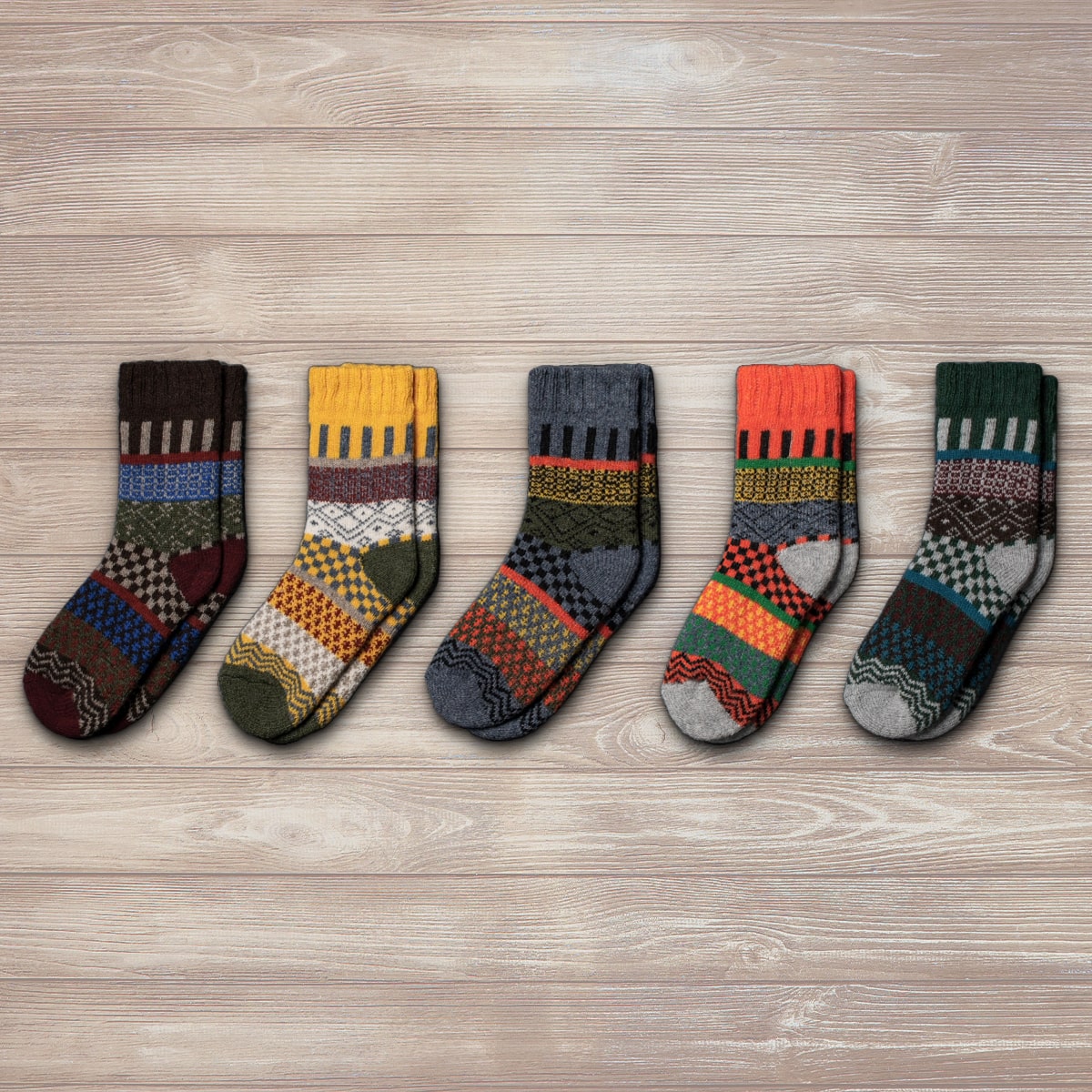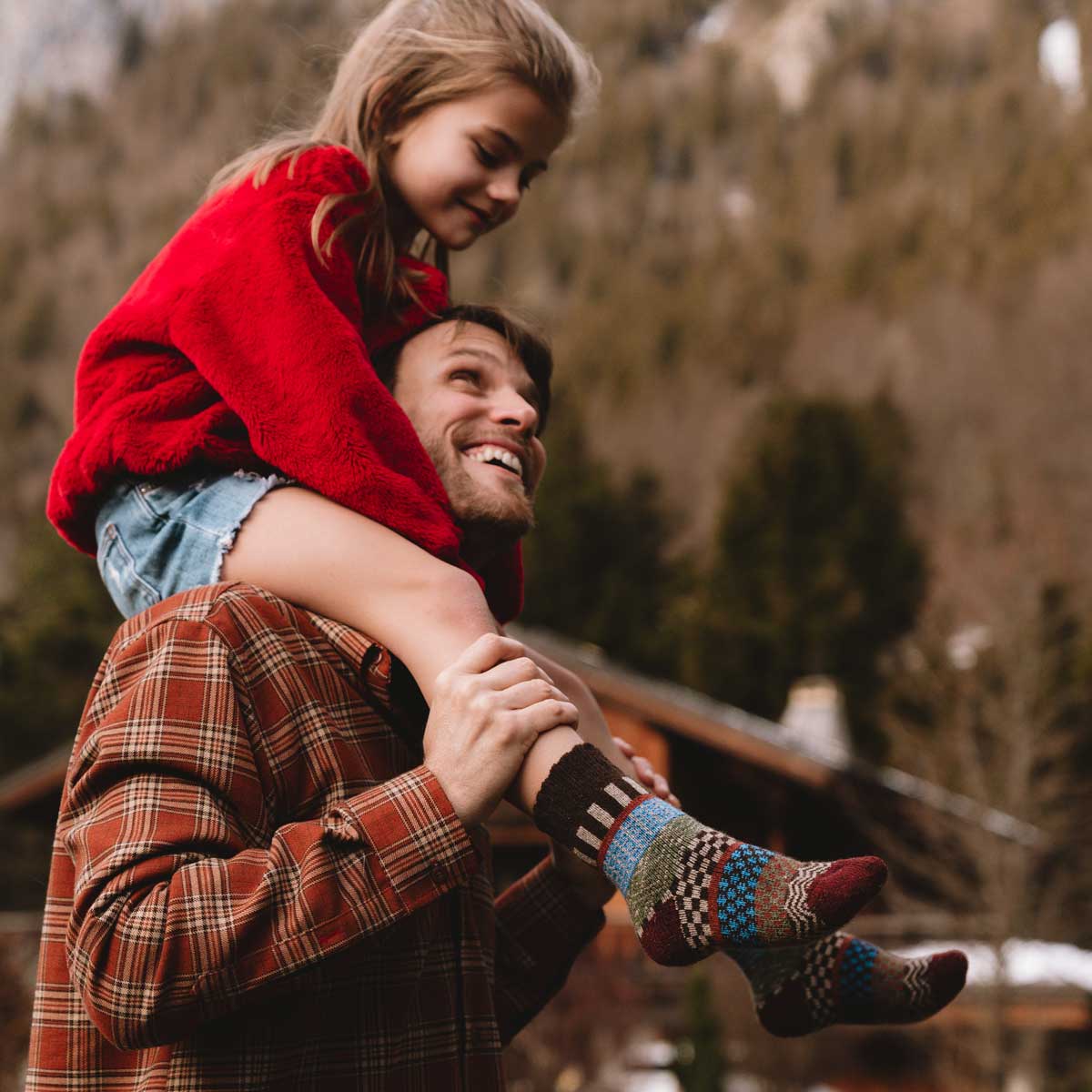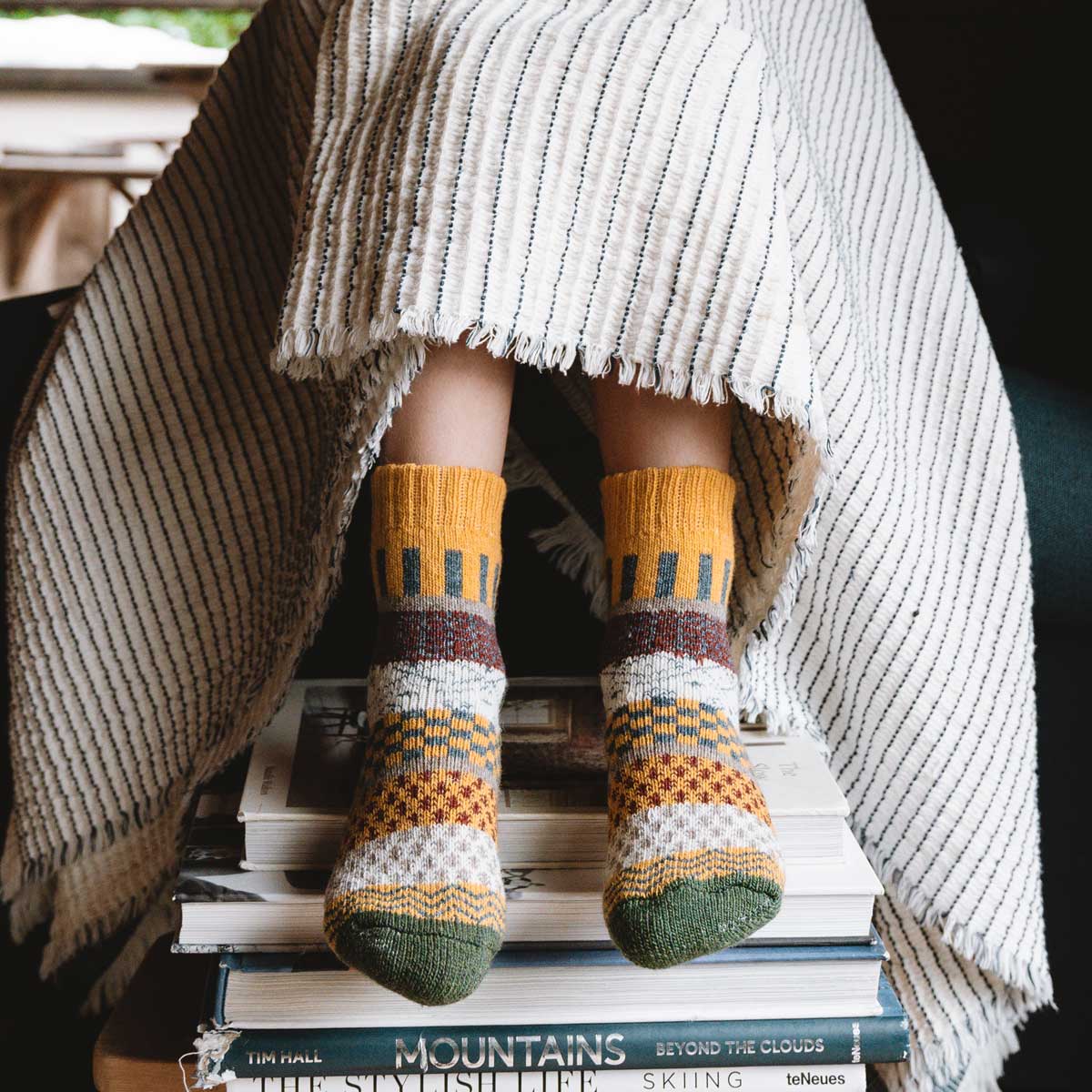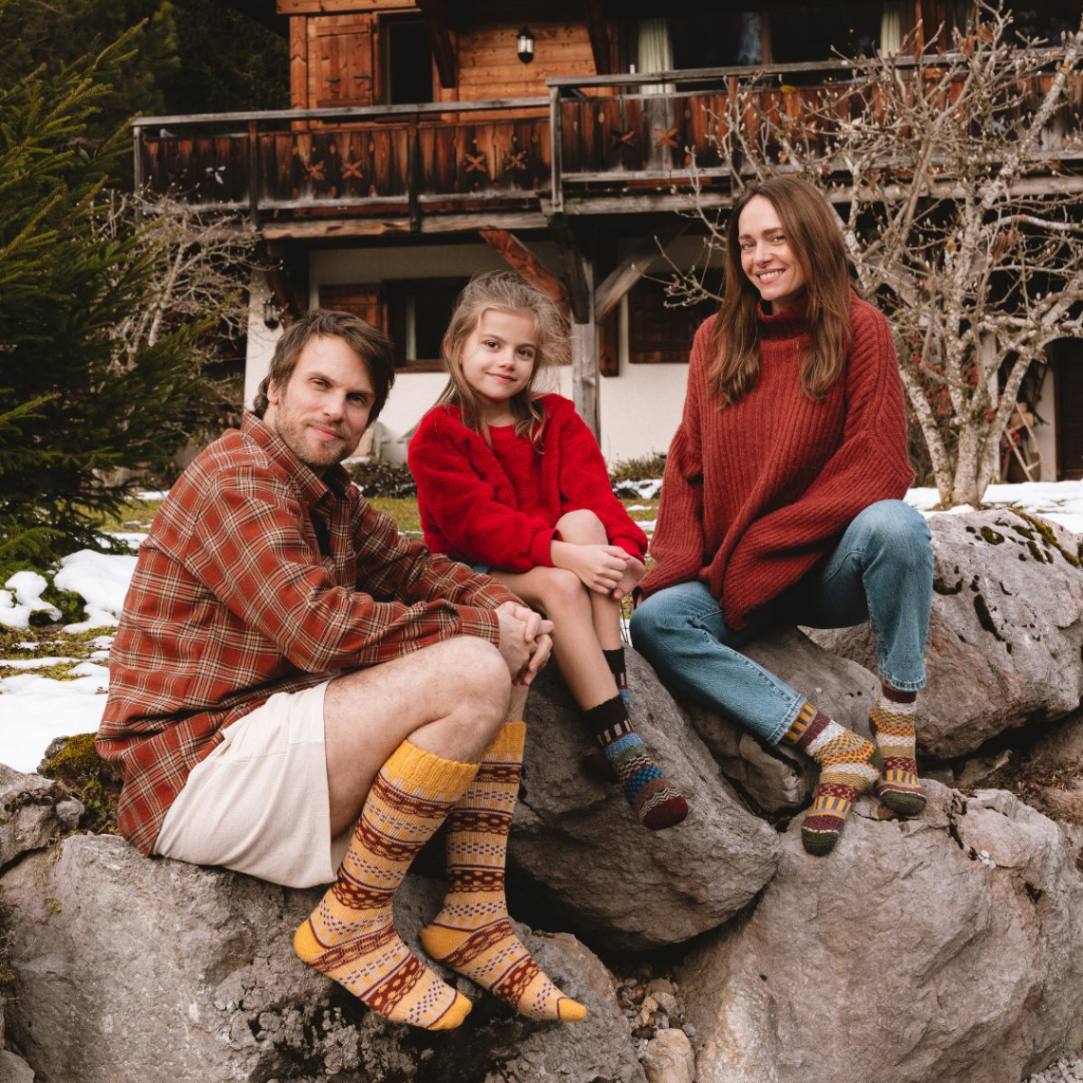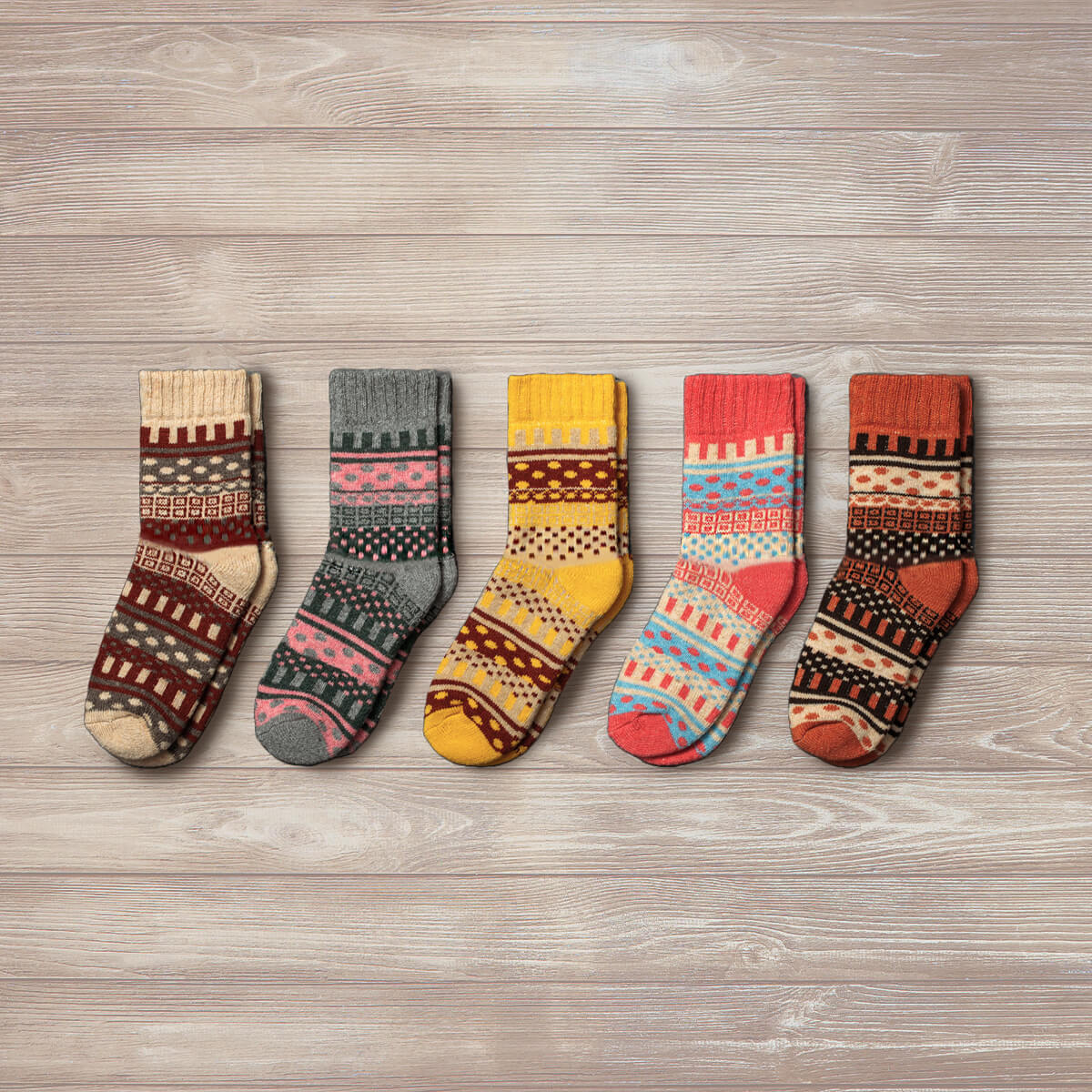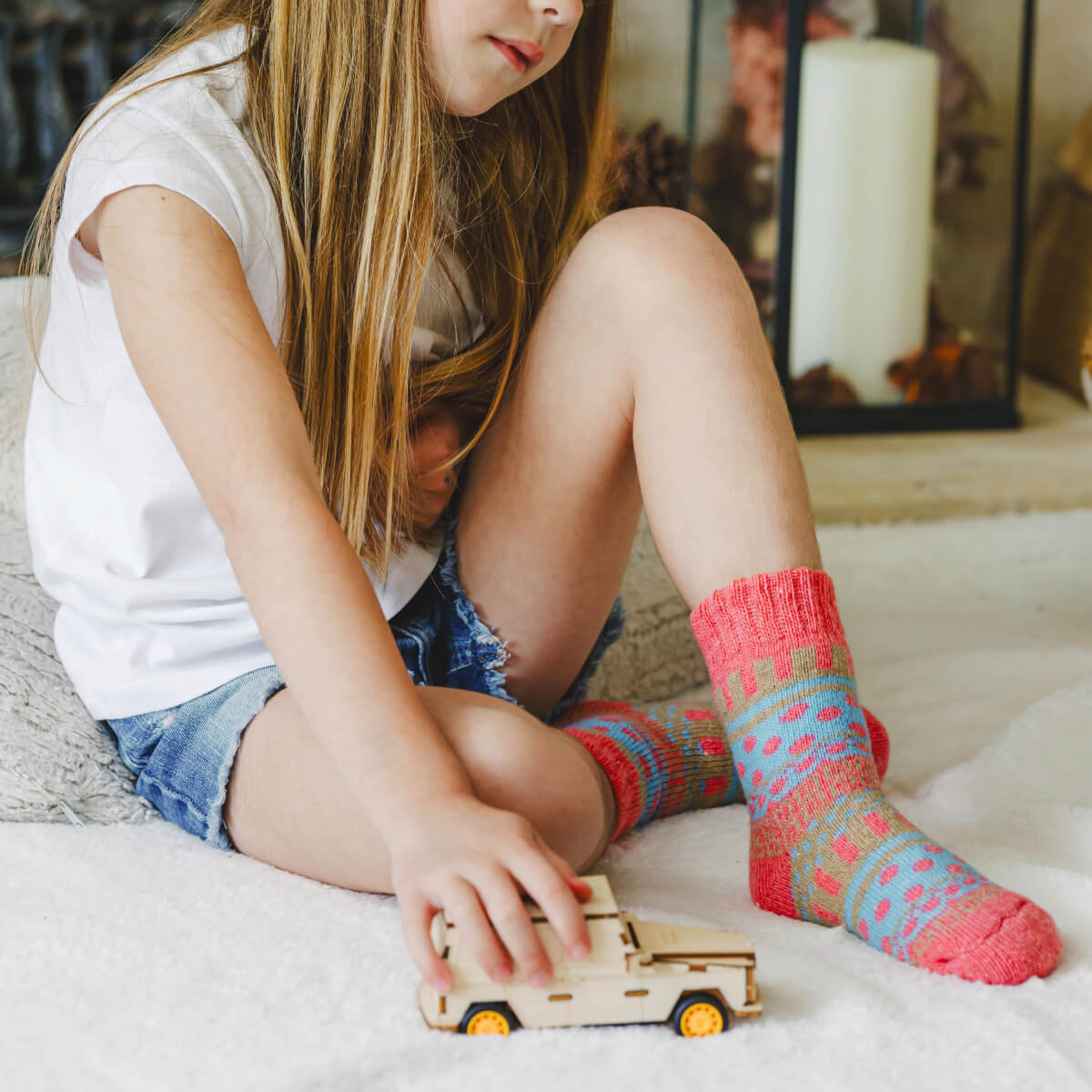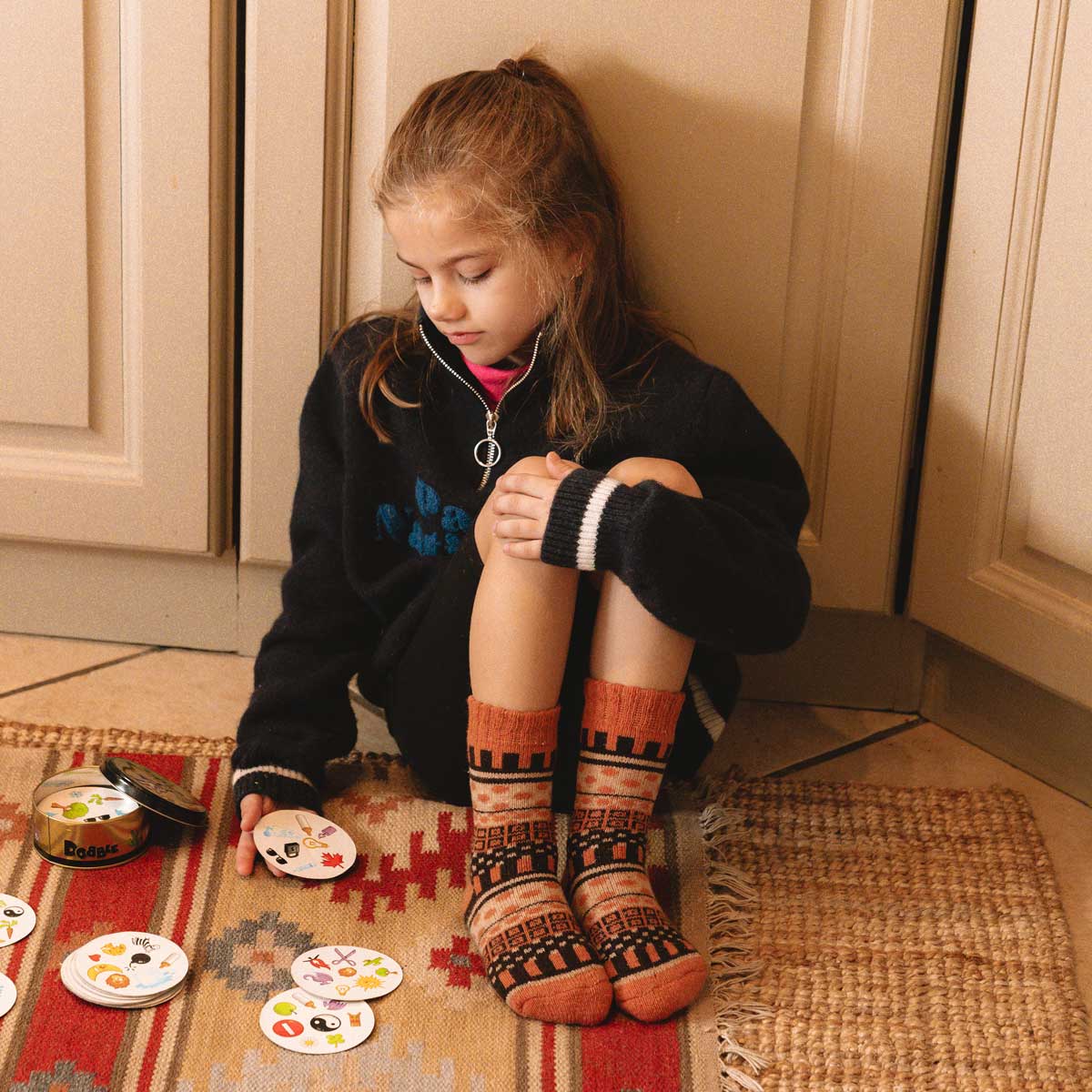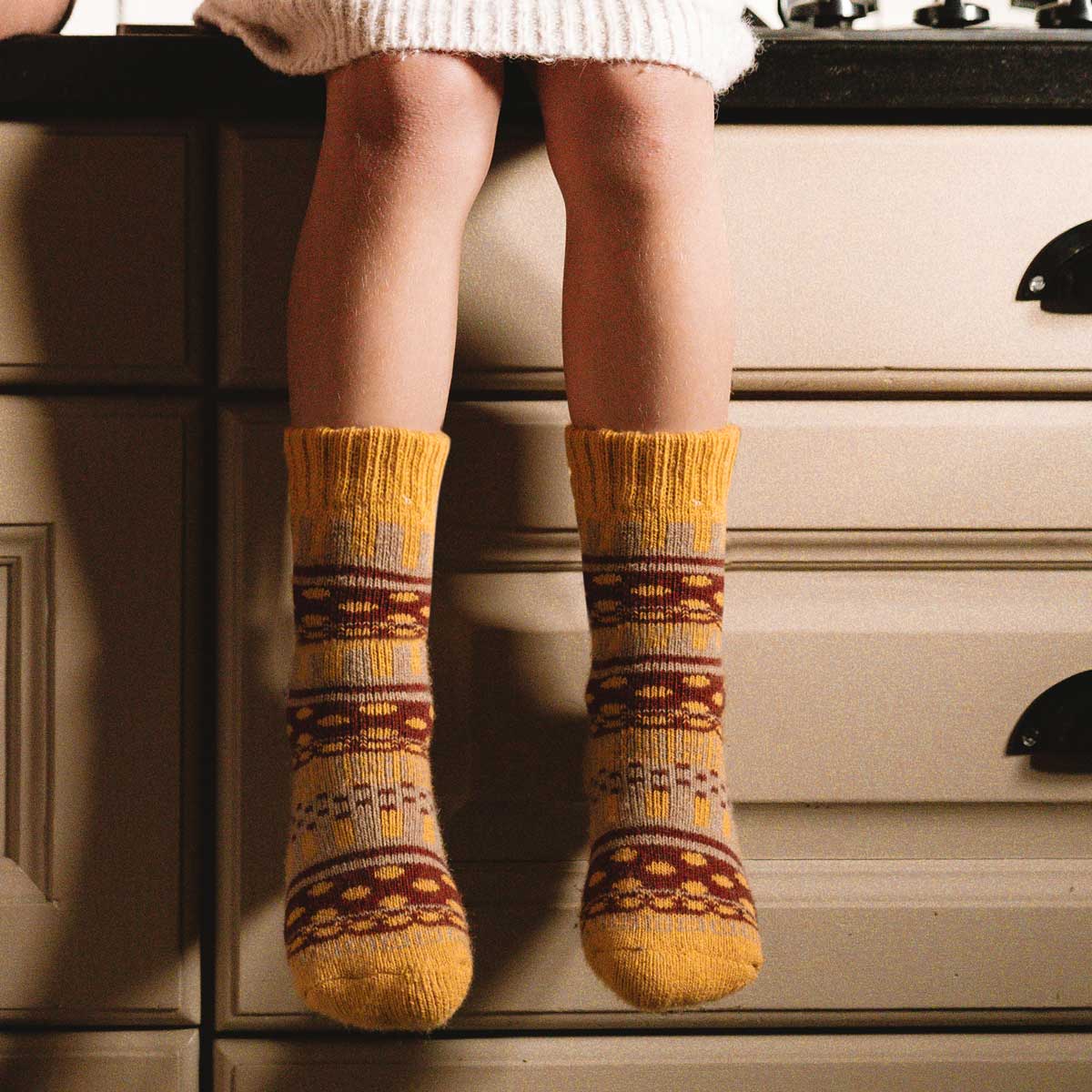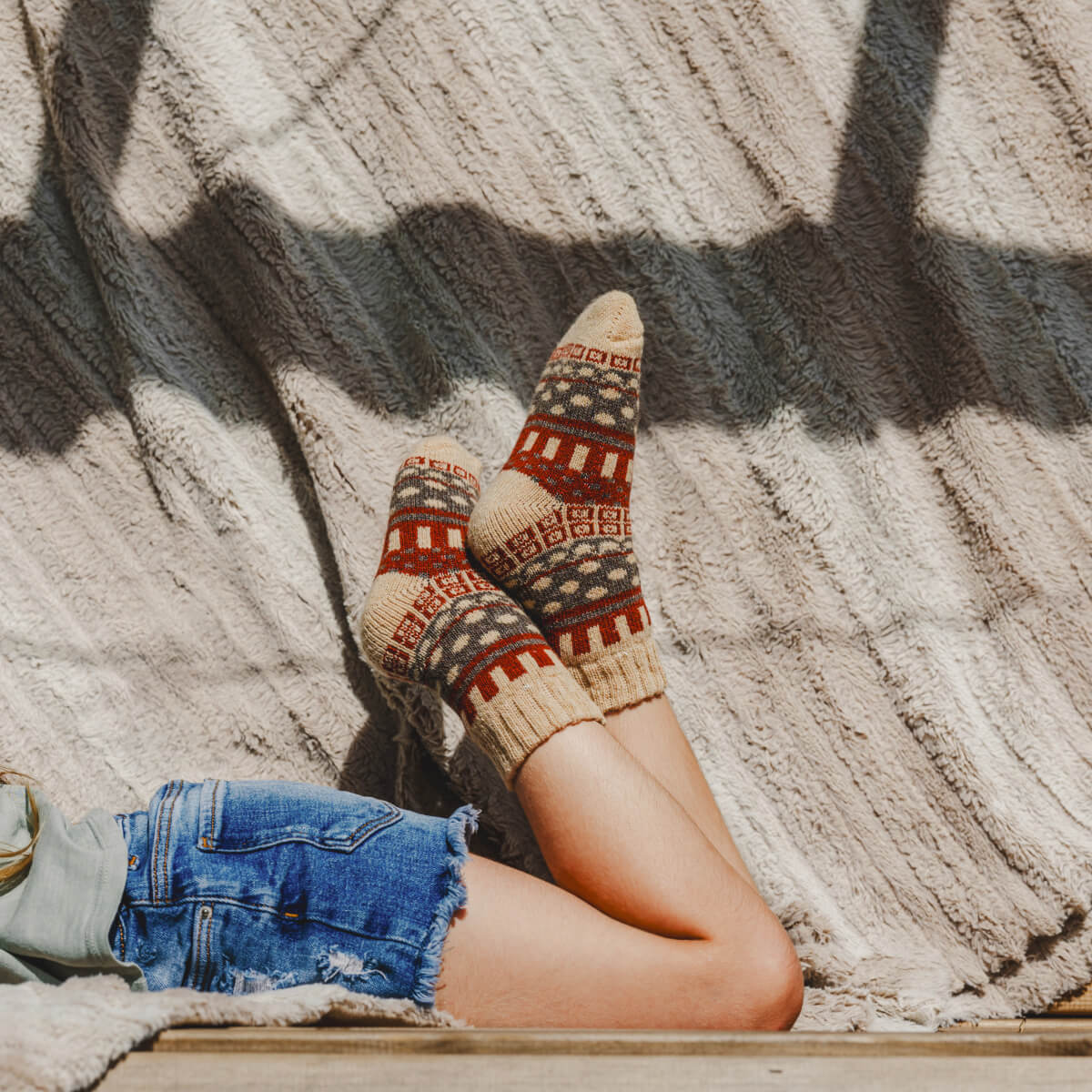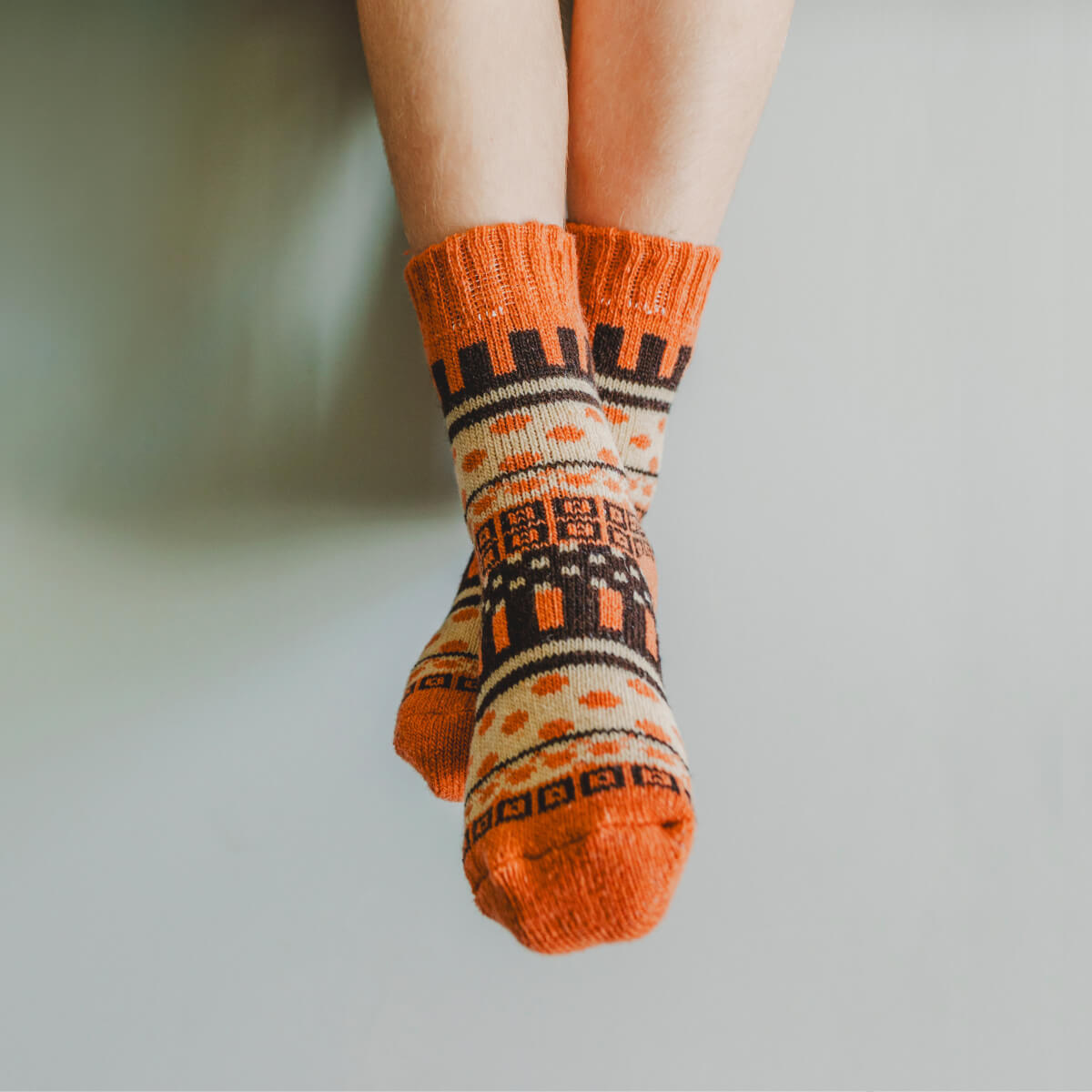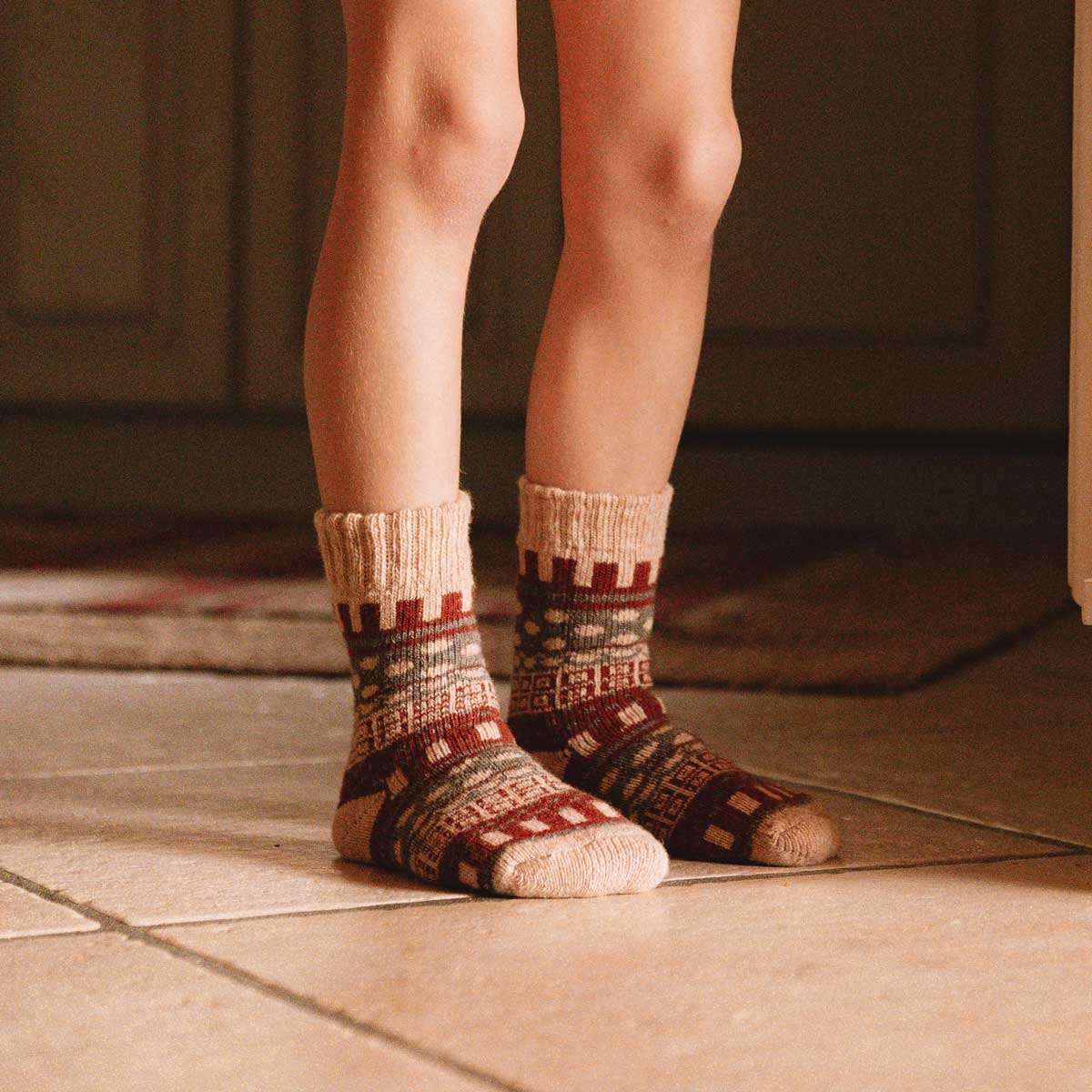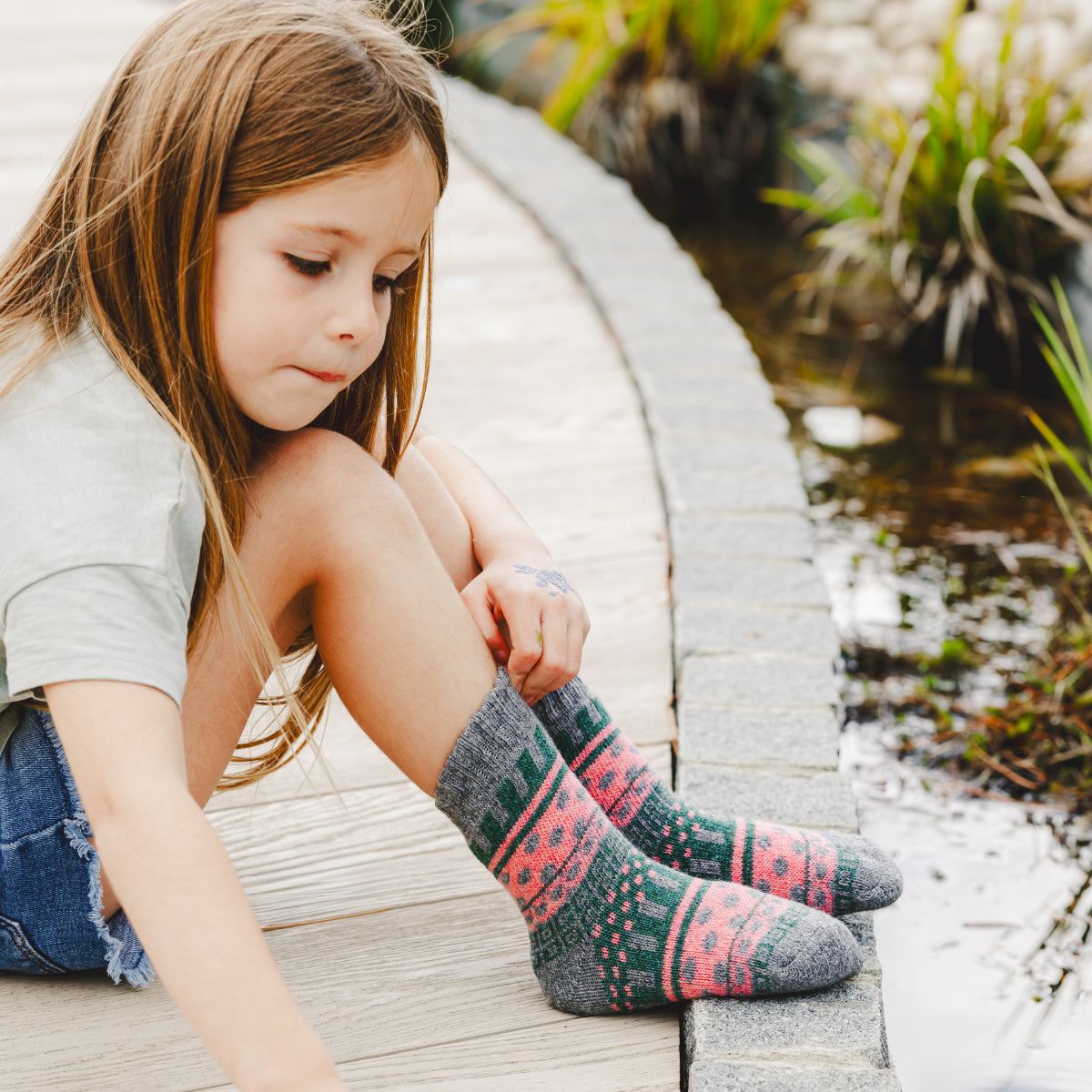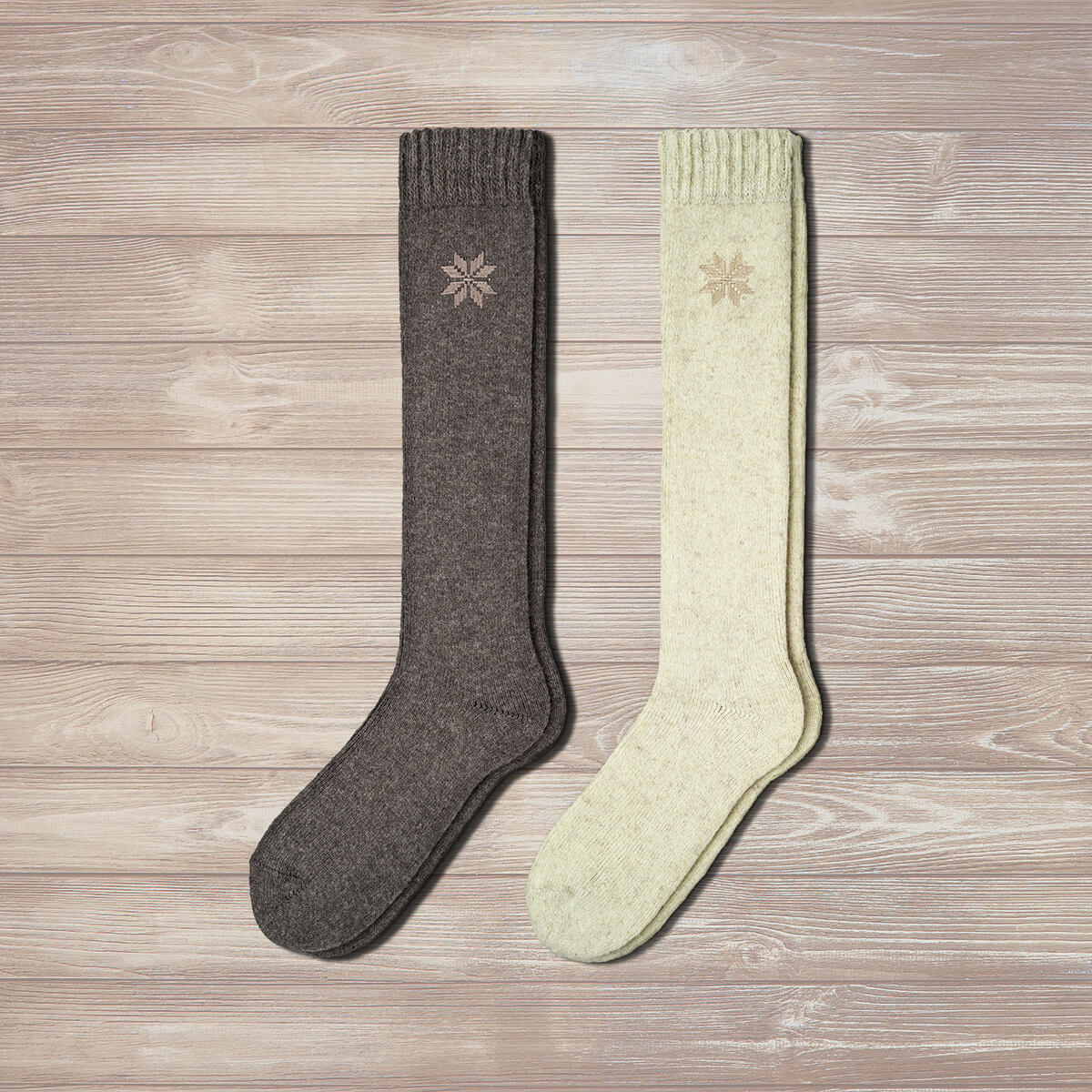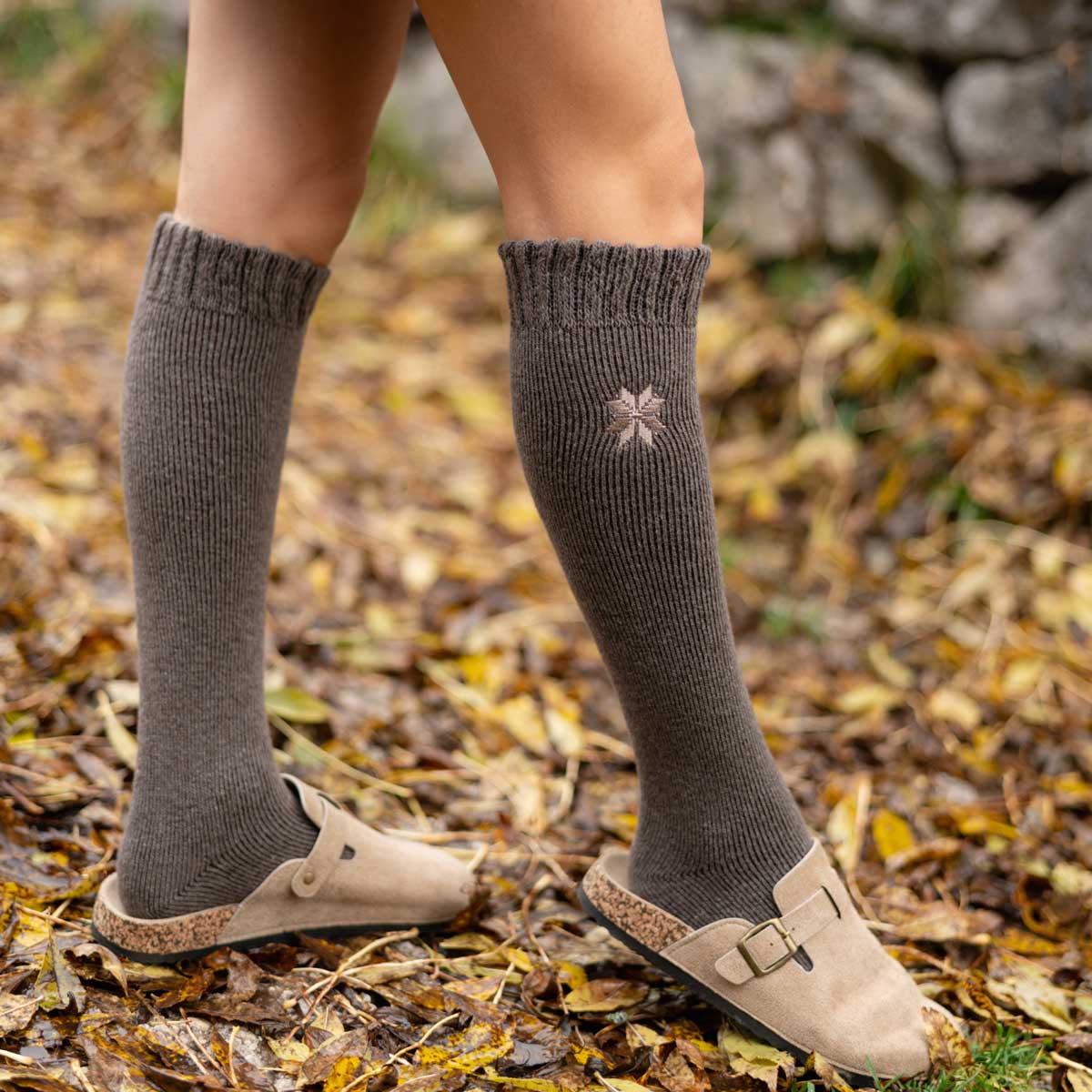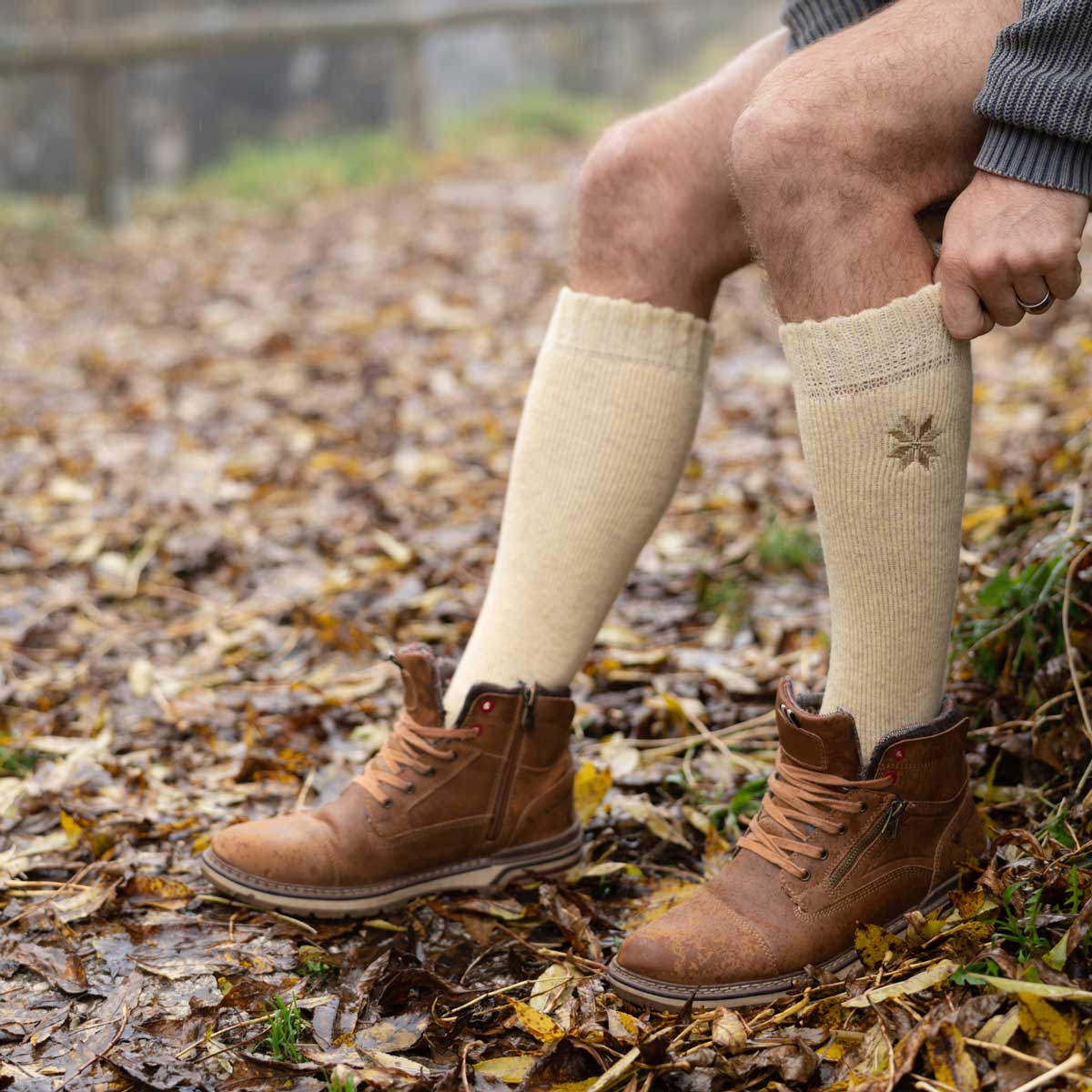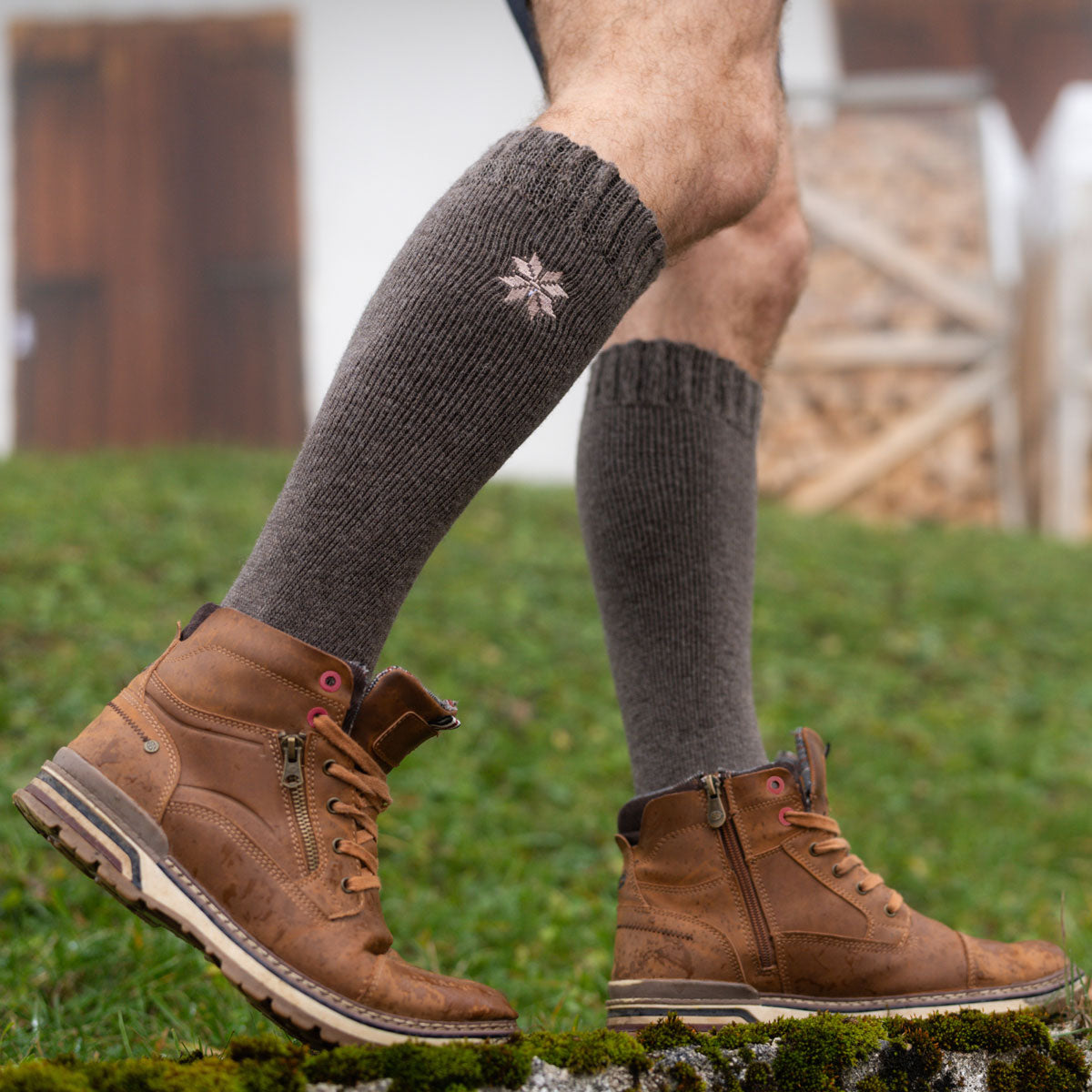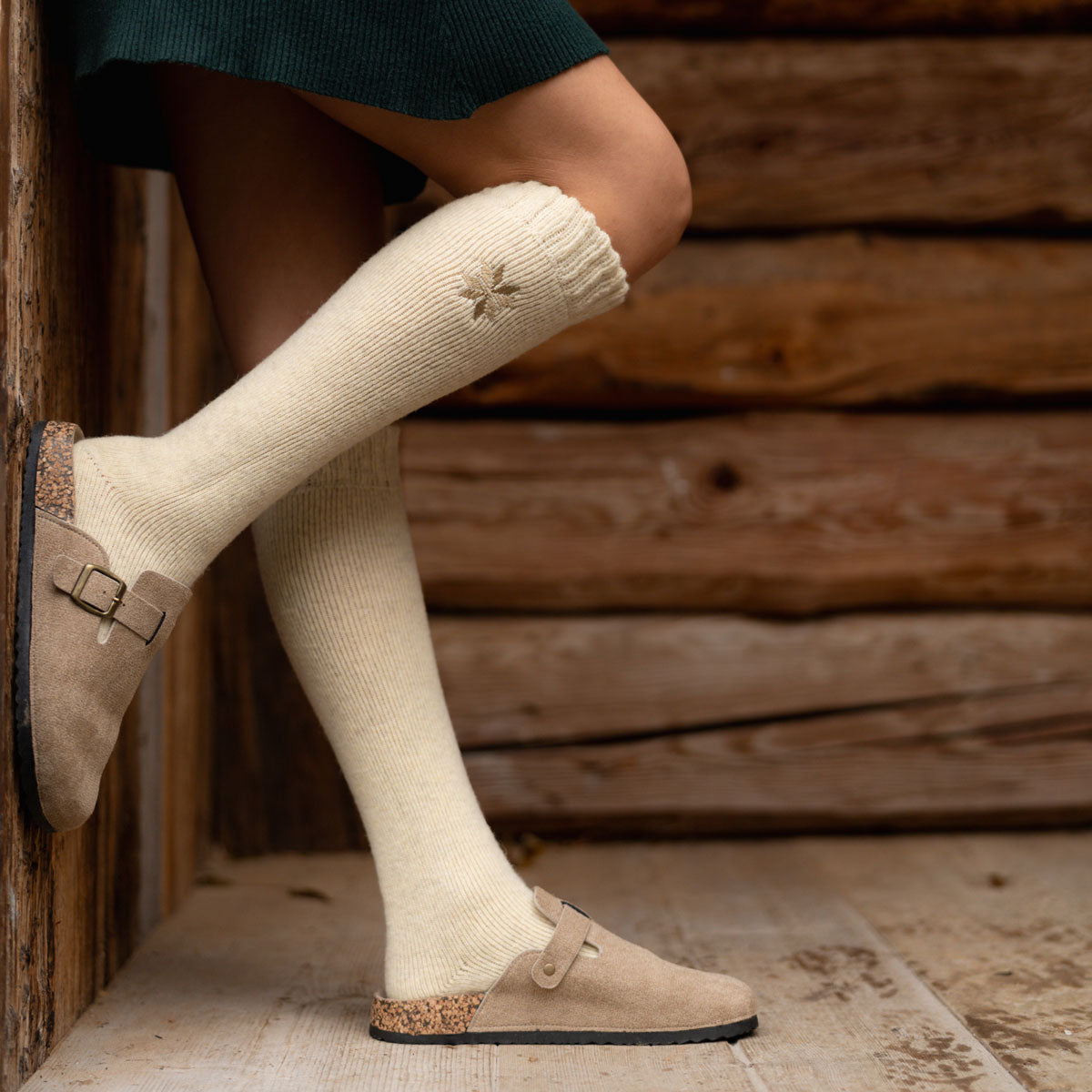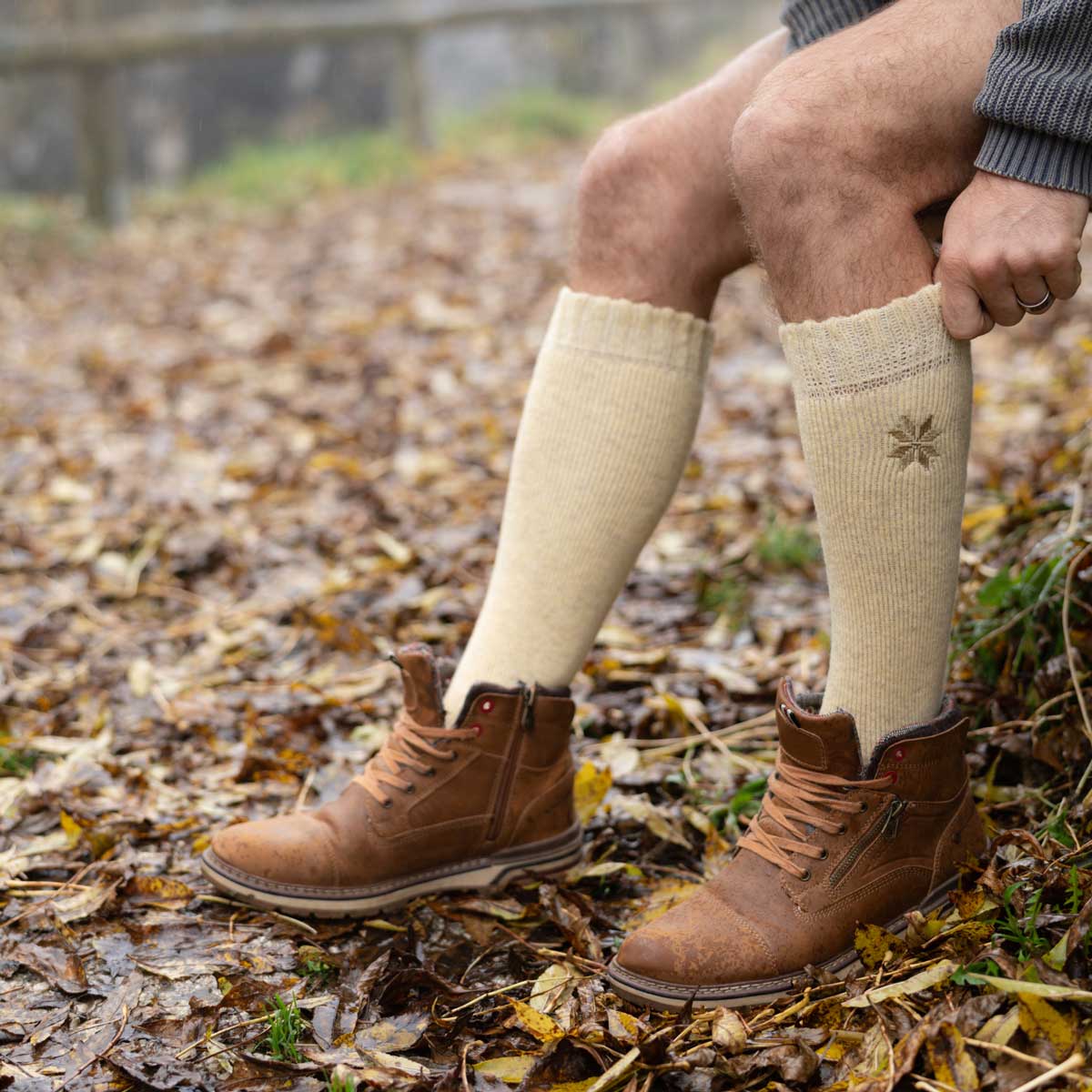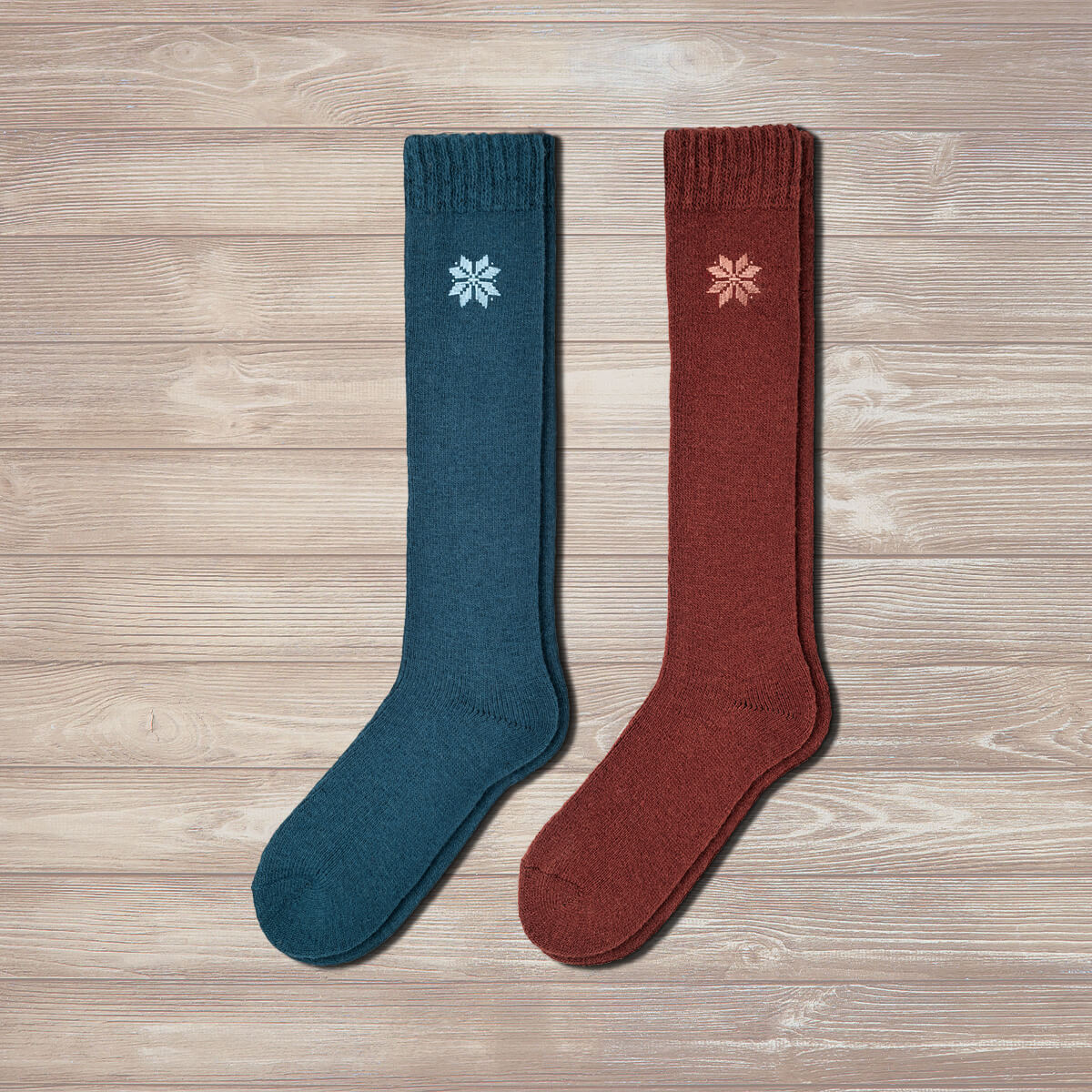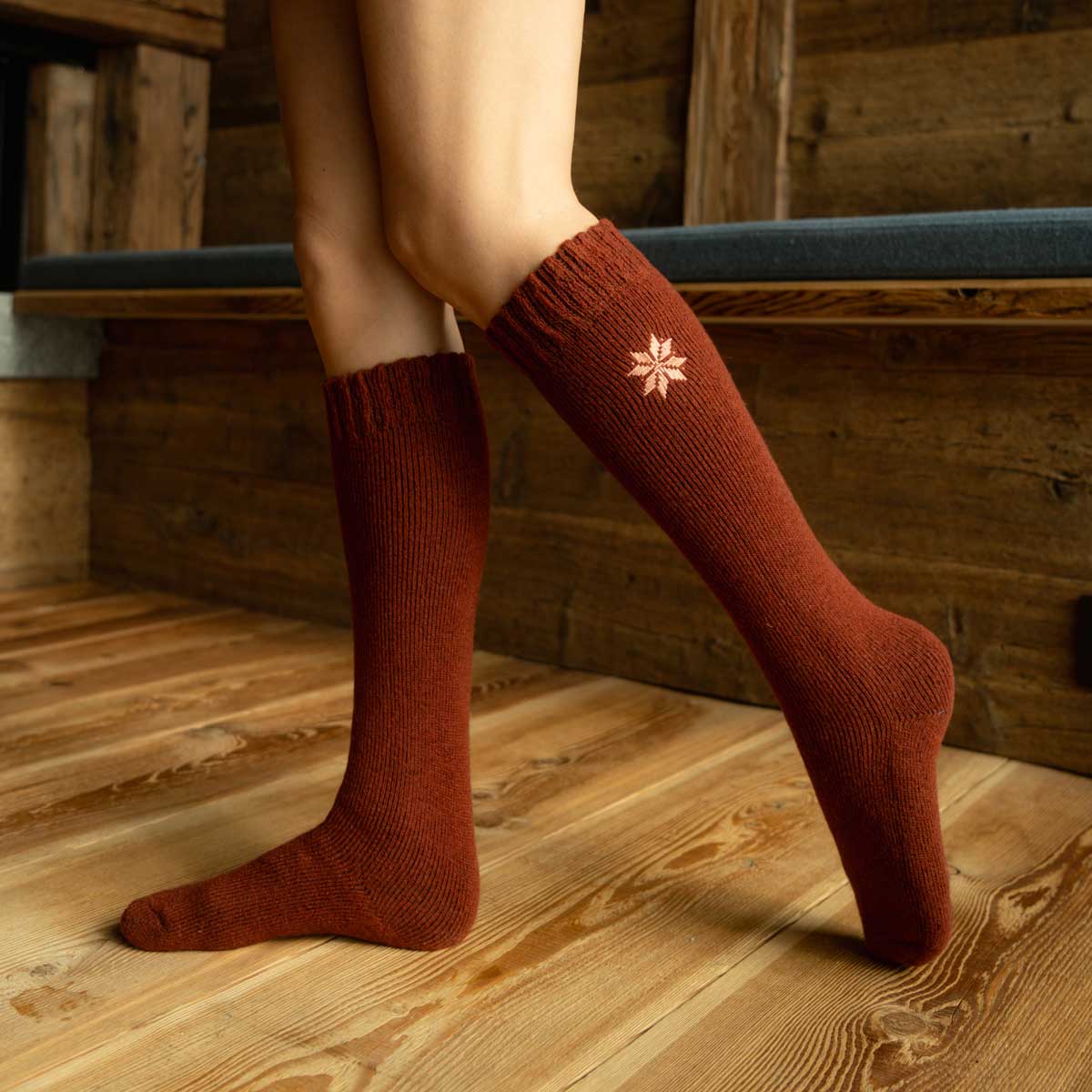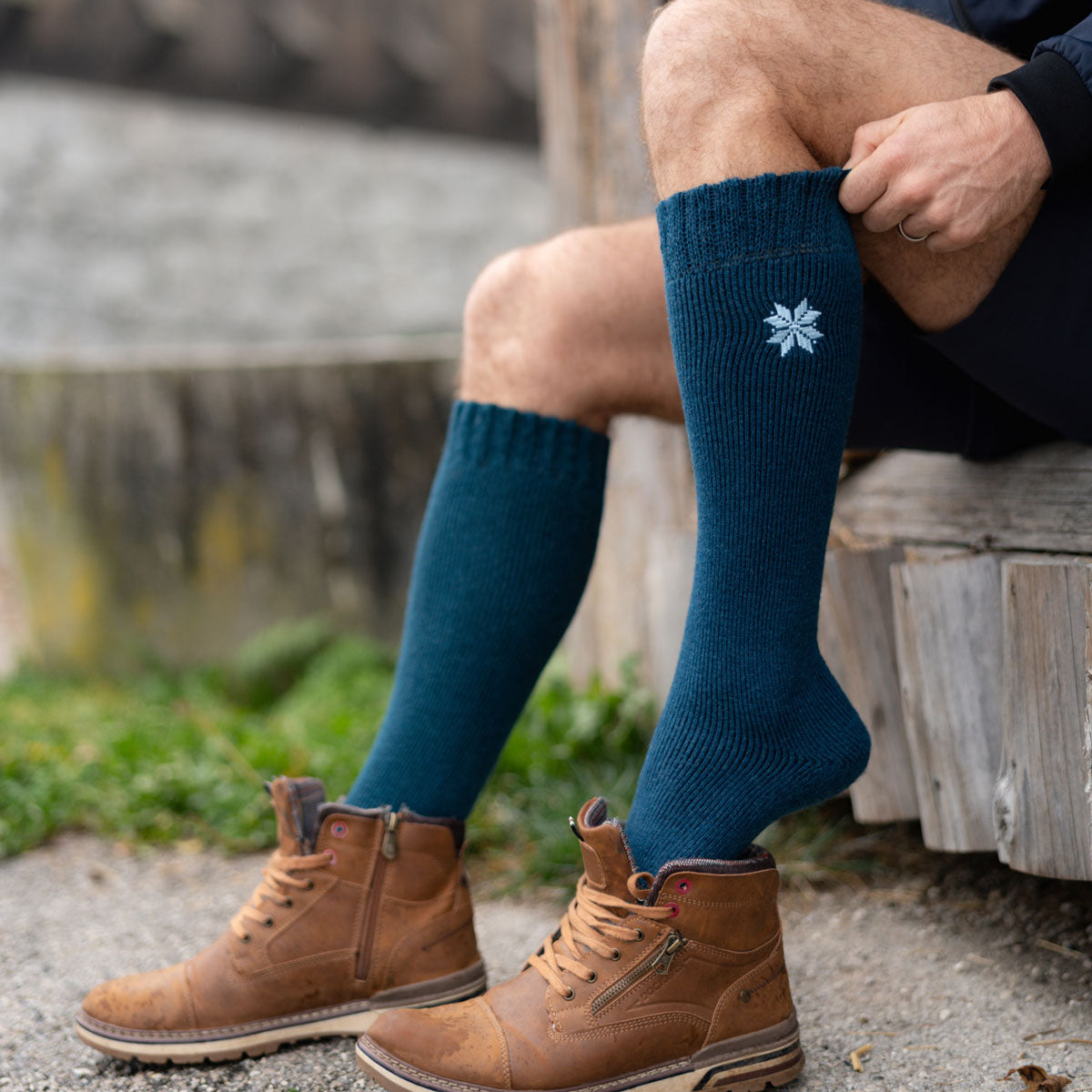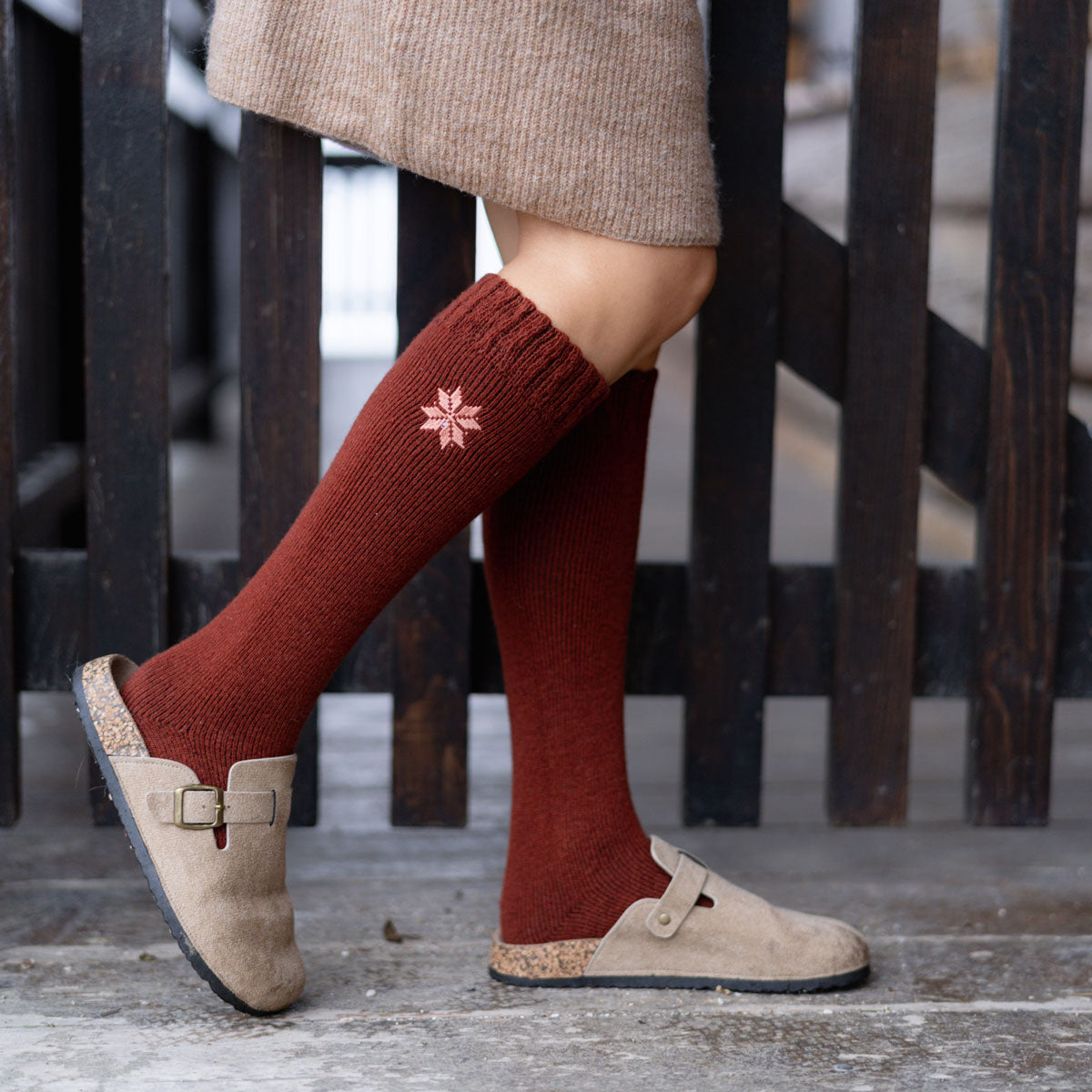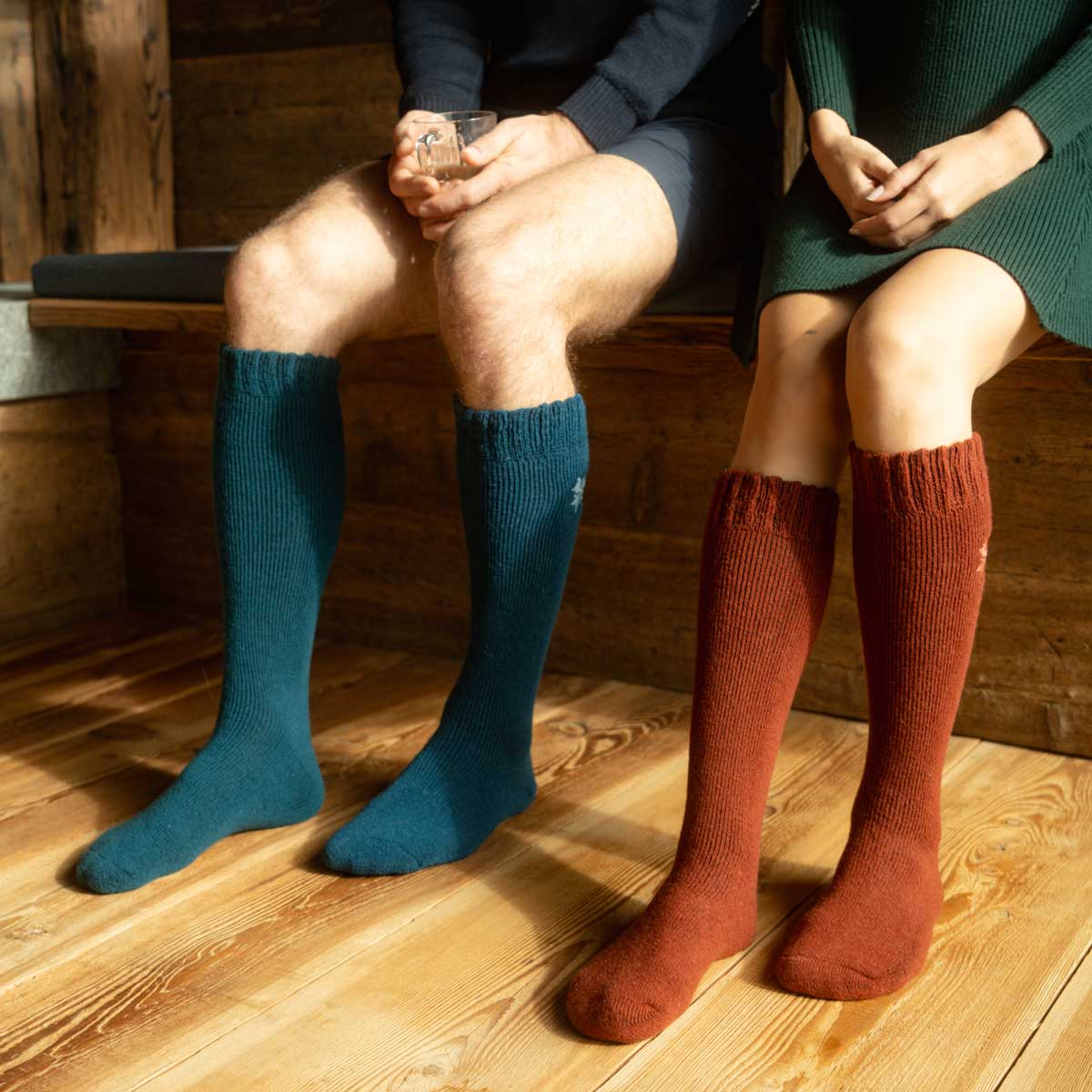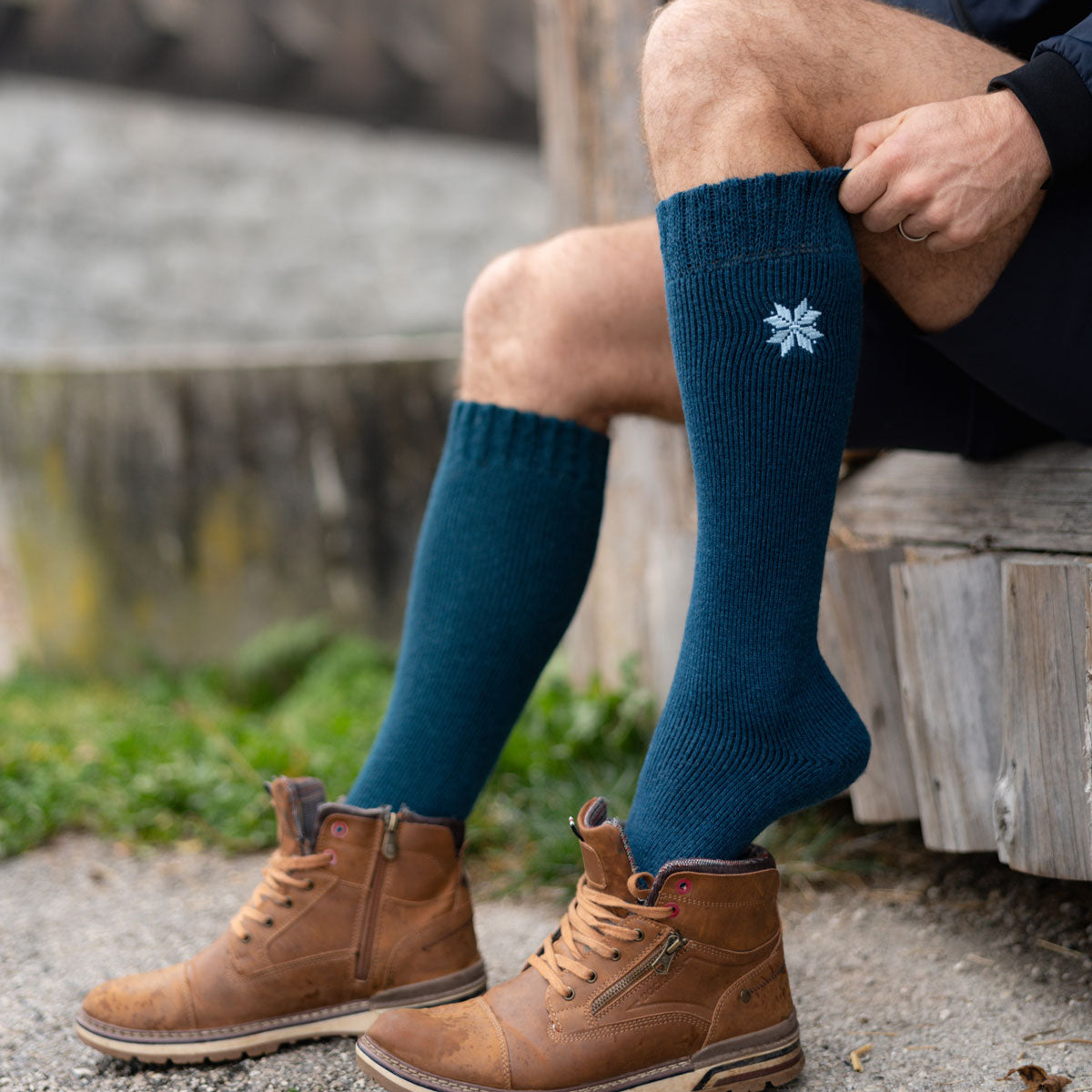Your Cart is Empty

What Should You Look For When Buying Hiking Socks?
10 min read
Hiking has become an increasingly popular hobby. It doesn’t matter whether you grew up as a boy or girl scout, in a village or metropolis, or what job you currently have. It’s the great equalizer. But going wrong with hiking apparel is upsettingly easy.
We aim to give you a jumpstart on your hikes by helping you choose the right hiking socks. There are multiple aspects to consider.

Importance of Choosing the Right Hiking Socks
Socks tend to be clothing items that you put on without a second thought. But at the end of a long and active day, the effects of improper socks are visible.
What are the risks of ill-fitting socks?
And when we say `ill-fitting’, we are not only talking about size. We are talking about improper materials, cushioning, height, and support. Not choosing proper footwear - including socks - for your hiking activities may result in:
- increased blistering
- foot odor
- athlete’s foot as a result of excessive sweating
- higher probability of developing bunions
- foot deformities or the worsening of already existing ones
- increased risk of injury
So, not getting proper equipment may result in complications that will keep you away from the sport for a while. And overall quality of life is also likely to take a long-lasting hit.
Material Matters
Material is one of the first things to consider when you choose the right hiking socks. Although general hygiene is paramount, it’s this factor that helps prevent excess sweat. Sweaty feet can lead to issues like unpleasant odors, as well as more serious problems such as injury and infection.
We researched the top materials for moisture absorption and overall protection. In addition to medical sources, we consulted forums dedicated to hiking and general survival tips in dire or strenuous situations. We came up with a comprehensive and comprehensible fabric guide.

Natural Fibers
The most intuitive direction is towards natural materials. For socks, wool and cotton tend to be favorites, each for specific reasons.
However, wool tends to take the spotlight. Sorts like Merino wool are even more desirable for those who hike, regardless of season and weather conditions.
Merino Wool
Merino sheep have always been popular for their wool, which is both fine and sturdy. Socks made from this wool can last a long time and withstand intense activities. However, using only wool for socks may cause them to lose their shape and lack mobility, which can lead to injury. There are solutions to this, though, particularly by blending Merino with synthetic and stretchy fabrics.
Cotton
Cotton is the number one fabric for all types of clothing. It’s highly accessible and one of the more breathable options for your garments. However, it has its array of disadvantages, too.
Firstly, it’s not always heat and moisture resistant. Cotton socks can serve you just fine during physical activity, but they might not withstand a heat wave or extremely demanding movements. As such, they bear a risk of abundant sweating and all the associated health complications that may arise.

Blended materials
As mentioned, 100% natural is an enticing tag. Even so, it’s not always the most beneficial one. Going for material blends might save you a lot of trouble.
Our number one suggestion is choosing a blend that contains primarily Merino wool, as this will help retain its primary properties. This wool type is sought-after because it:
- keeps moisture at bay
- keeps your feet warm during the winter and cool during the summer
- is comfortable
- can be worn multiple times and withstand multiple washes.
Even so, note that it needs slightly cooler temperatures when you use the washing machine. Another recommendation is to always pick a gentle wash for wool-based socks.
Generally, even people that get rashes from regular wool will report a high degree of comfort while wearing Merino-based socks.

Advantages of blends for hiking socks
Blending a natural fabric like wool from Merino sheep with synthetic materials like nylon or elastane has unexpected benefits. Don't be put off by the word 'synthetic' as long as the product was created in safe and environmentally-friendly conditions.
Furthermore, by using these materials, designers can create a more flexible type of sock that caters to your preferred physical activity. Stretchy materials are essential for socks that fit snugly around your ankles and calves without constricting blood circulation.
Blends and skin sensitivity
Pure wool can be irritating and cause contact dermatitis for some people. If you are allergic to it, it's best to avoid it completely. If you're only sensitive to wool, you can try gentle wools like Merino or wool blends, which can make a world of difference.

Cushioning and Padding
More or less cushioned stockings are ideal for different environments. There is no one-size-fits-all sock for all sports and seasons, although we can come close at times.
It may seem like a bit of a science, and to some extent, it is, but we assure you that you can still have fun while doing it.
Sock Height
As time passes and seasons progress, so does your footwear. So, why shouldn’t this apply to your socks, as well? Wearing socks that are either too short or too long for your shoes can lead to injuries, and in the worst case, serious infections
Ankle Socks
Ankle socks are ideal for warmer seasons, as long as you wear protective enough trousers and footwear. Ankle crew socks tend to be breathable and prevent overheating. Furthermore, ankles are a significant pressure point, and socks that help compress it will improve your blood flow and overall performance.
Avoid socks that are too tight
Excessive tightness is a concern for all socks wearers, but the issue is even more prevalent in ankle socks. Wearing an ill-fitting pair may lead to worsening bunions, hammertoes, and circulation problems.
Choose the right hiking socks reaching to your ankles
However, a risk factor during hiking is that vegetation might reach up to your legs and irritate them.
It might be best to wear your ankle socks for shorter and more accessible hikes on hills or mountains that are less rich in vegetation. We also recommend wearing protective layers of sunscreen and pest-repelling substances. Alternatively, you can get an emergency kit to aid you in the case of bug bites.

Crew Socks
Crew socks, also known as regular crew, tend to reach your mid-calf. They ensure protection against the elements and vegetation, particularly during transition seasons like spring and autumn.
This sock length is generally seen as the most adaptable one, although it will not keep you covered - literally nor figuratively - in all situations. This is the length that you’ll generally find in general and specialty stores, and helpful as it is, we firmly believe that all three sock lengths are crucial for the best hiking experience all year round.
Knee-High Socks
Knee-high socks are more versatile than they initially seem. While extremely low temperatures generally correspond to their time to shine, Merino wool ensures they are suitable to wear at other times, too.
For example, summer and high temperatures invite bugs and overgrown vegetation on mountaintops. To keep those at bay, knee-high socks made of heat-controlling, moisture-wicking Merino wool blends might be the top choice.
Moisture-Wicking Properties
The sustained effort one makes during hikes will bring about a fair amount of moisture. Unfortunately, this breeding ground for fungi and bacterial infections leads to unpleasant long-term effects.
Benefits of Moisture Management
Keeping moisture at bay will make a world of difference. You will stay far away from the occurrence or worsening of conditions like:
- athlete’s foot (a persistent fungal infection lasting months and years on end)
- bunions (unusual painful bumps)
- irritation and rashes
- foot deformities
- dry skin and peeling
Podiatric and dermatologic issues are prevalent among physically active people, and they hinder one’s performance tremendously. n the worst-case scenarios, it may even require taking a break from physical activities.
Best Materials for Wicking
Popular wisdom says that cotton is good at wicking moisture. While this is somewhat true, there are better options. Cotton is less effective than other materials, especially in intense heat or during high-intensity sports.
Wool is the number one choice of athletes, hikers, and survivalists all around the Globe. And soft wool like that coming from Merino sheep will also ensure that rashes won't be a problem unless you've got general wool allergies.
This natural fabric helps regulate foot temperature, providing comfort and promoting podiatric health, which is crucial for hikers and physically active individuals.

Functional Socks for Hiking
Conquering hilltops and mountaintops is a challenging task. Even more so when considering weather variations and altitude, flora, fauna, and other variables. Specialized footwear and hosiery are significant for a positive hiking experience. Wearing the right fit can increase your comfort and stamina.
But what makes a functional sock functional? There are specific elements to look for when you buy the ideal sock set.
Ventilation Mesh Panels
Ventilation mesh panels (or strips) are a unique feature often found in functional socks rather than standard ones. These panels/strips consist of a more open, breathable knit fabric that allows for increased airflow around the feet. This enhanced airflow helps to regulate temperature, ensuring your feet stay cool and comfortable during high-intensity activities.
Ventilation mesh panels work by creating pathways for air to circulate within the sock. This airflow helps to wick away moisture more efficiently, working in tandem with the moisture-wicking properties of Merino wool. As your feet sweat, the ventilation mesh allows the moisture to evaporate quickly, preventing the build-up of sweat and heat.
Reinforced Heel
Reinforced heels are a key feature in high-performance socks, designed to provide additional durability and support where it's needed most. They are typically constructed with extra layers of material or specialized stitching techniques to enhance the strength and longevity of the sock in the heel area, which is prone to wear and tear.
The reinforced heel area is designed to withstand the repetitive stress and impact that occurs during activities like hiking. This reinforcement provides a sturdier base, helping to absorb shock and reduce the risk of the sock wearing out prematurely. Seamless reinforcements are particularly beneficial as they eliminate the rigid seams that can cause discomfort, ensuring a smoother fit that keeps your feet in the correct position without irritation.

Seamless Toes
Seamless toes are an innovative design feature in high-performance socks, crafted to provide maximum comfort and durability. Unlike traditional socks with noticeable seams at the toe area, seamless toes are created using advanced knitting techniques that eliminate the bulky seams, resulting in a smooth, irritation-free fit.
Seamless toes function by providing a uniform and smooth surface around the toe area, reducing friction and pressure points. This design minimizes the risk of blisters and discomfort, which are common issues with conventional sock seams. Seamless toes are often reinforced with synthetic blends, enhancing their durability and ability to maintain shape, unlike pure wool socks which can quickly lose their form.
Compression Zones
Compression zones in socks are a highly sought-after feature among athletes and hikers, designed to provide targeted support and improve overall performance. These zones apply gentle pressure to specific areas of the foot and lower leg, such as the ankle, soles, and toes, offering various benefits that enhance your hiking experience.
Compression zones function by applying consistent pressure to key areas of the foot and lower leg. This targeted compression helps to stimulate blood flow, reduce muscle vibration, and provide additional support to areas prone to fatigue and injury. The pressure is strategically distributed to ensure that it supports the natural contours and movements of your feet and legs.
Temperature Regulation and Odor Control

Heat and cold are the main enemies of a good hike. To make the most out of your mountain trip, you must feel comfortable from the top of your head to your toes. We will not go into headwear, but you can leave footwear to us. Below, you'll find the three aspects that make for heat-controlled socks.
Insulating Properties
When it comes to hiking and outdoor activities, choosing materials that insulate your feet from harsh elements is crucial. Wool, particularly Merino wool, is an excellent choice for sock material due to its superior insulating properties.
How Wool Insulates
Wool is a natural fabric that excels at temperature regulation. Its fibers create tiny air pockets that trap heat, providing warmth in cold conditions. Conversely, wool can also help keep your feet cool in hot weather by wicking moisture away from the skin, allowing it to evaporate quickly. This dual functionality makes wool an ideal material for varying weather conditions encountered during hiking.
Natural Odor-Resistant Materials
Natural wool, particularly Merino wool, helps keep unpleasant smells at bay due to its inherent antimicrobial properties. Merino wool fibers naturally resist the buildup of odor-causing bacteria, ensuring that your socks remain fresh even after long hours of wear. This makes Merino wool an excellent choice for hikers and athletes who need reliable and hygienic footwear.
Conclusion
Hiking, a global hobby, is not limited by the absence of mountains. Enthusiasts strive to conquer as many summits as possible, regardless of the season. To adapt to these varying conditions, it's wise to invest in versatile sock sets. These sets, crafted from material blends that enhance both temperature control and mobility, will give you the confidence to tackle any hiking adventure.
FAQs:

Are expensive hiking socks worth the investment?
Yes, expensive hiking socks are often worth the investment for several reasons:
- Durability: High-quality hiking socks are made from durable materials like Merino wool and advanced synthetic blends that withstand rigorous use and last longer than cheaper alternatives.
- Comfort: These materials provide superior comfort, ensuring a snug fit and reducing the risk of blisters and hotspots.
- Moisture-Wicking: Expensive hiking socks typically offer excellent moisture-wicking properties, keeping your feet dry and reducing the risk of fungal infections and blisters.
- Temperature Regulation: Premium socks often have better insulation, keeping your feet warm in cold conditions and cool in warmer climates.
- Odor Resistance: High-quality materials like Merino wool naturally resist odor, keeping your feet fresher for longer periods.
By choosing high-quality socks, you enhance your hiking experience, ensuring your feet remain protected and comfortable on any adventure.
Can I use regular socks for hiking?
Using regular socks for hiking is not recommended. Regular socks lack the durability, moisture-wicking, and temperature-regulating properties of hiking socks, which can lead to blisters, discomfort, and even foot injuries. Hiking socks are designed with features like seamless construction, reinforced heels, and compression zones to provide better support and protection. They also typically include materials like Merino wool for better moisture management and odor resistance. Investing in proper hiking socks enhances your comfort and safety on the trails.
How do I prevent blisters with hiking socks?
To prevent blisters with hiking socks, choose right hiking socks made from moisture-wicking materials like Merino wool or synthetic blends to keep your feet dry. Ensure a proper fit to avoid excess movement within your shoes, which can create friction and lead to blisters. Additionally, consider wearing liner socks underneath your hiking socks for an extra layer of protection against blisters.
Get Exclusive offers
Join our email list and get exclusive offers and 10% off on first order.
Recent Articles
-
 Nordic Socks for Every Activity April 10, 2025
Nordic Socks for Every Activity April 10, 2025 -
 What are the best cotton socks? February 18, 2025
What are the best cotton socks? February 18, 2025 -
 The Cultural Inspiration Behind Our Sock Designs December 03, 2024
The Cultural Inspiration Behind Our Sock Designs December 03, 2024 -
 What Should You Look For When Buying Hiking Socks? November 12, 2024
What Should You Look For When Buying Hiking Socks? November 12, 2024 -
 Guide to Keeping Your Feet Toasty: The Best Socks for Cold Weather October 22, 2024
Guide to Keeping Your Feet Toasty: The Best Socks for Cold Weather October 22, 2024
Related Products
Enjoying this content?
Sign up to get notification about new articles, special offers and new products.
Knee High Socks
NEWS & UPDATES
Get the newsletter to receive direct information about offers and new products.
Where are we shipping to?
Purchase from your country’s website.
It’s the fastest way to pamper your feet with comfy socks.
other countries
English






